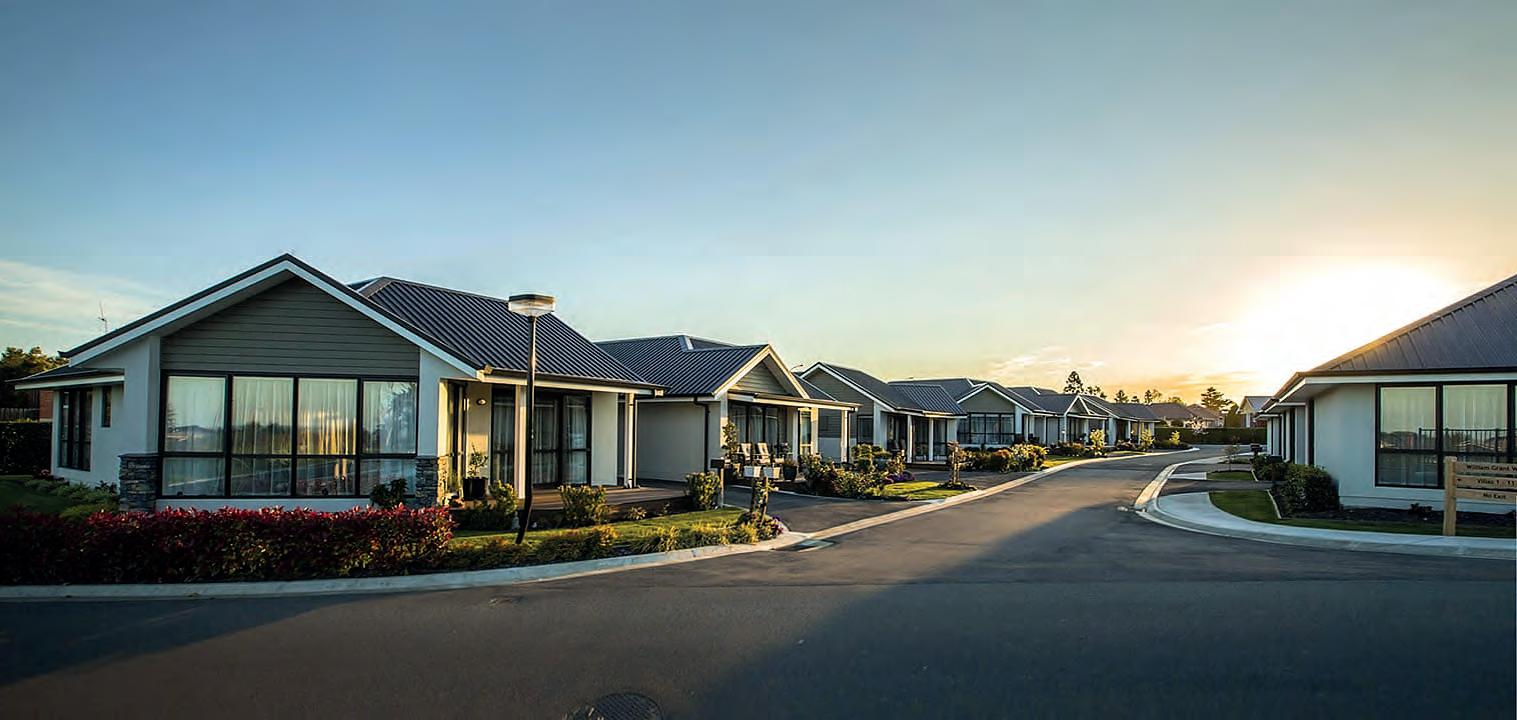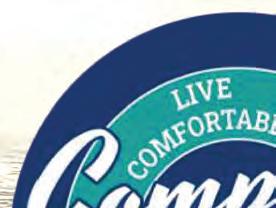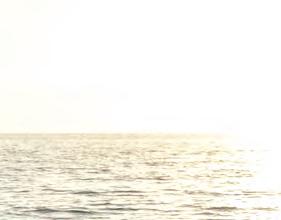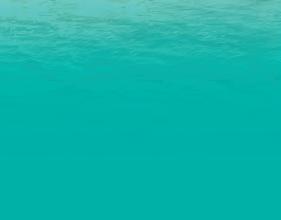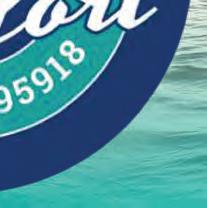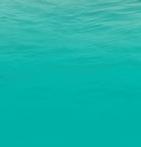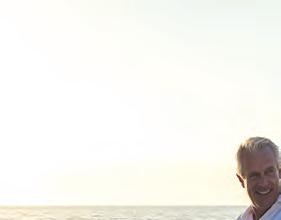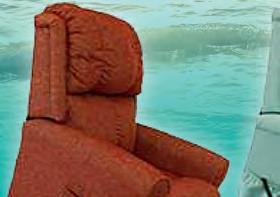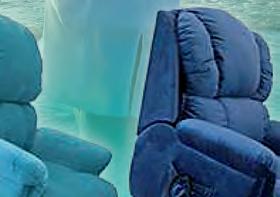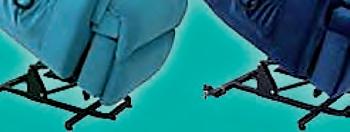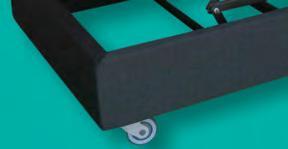

















CULINARY DELIGHTS FROM THE MOUNTAINS TO THE OCEAN






















CULINARY DELIGHTS FROM THE MOUNTAINS TO THE OCEAN



WHY THE WAY SENIORS ARE PORTRAYED IN THE MEDIA AND EVERYDAY LIFE NEEDS TO CHANGE












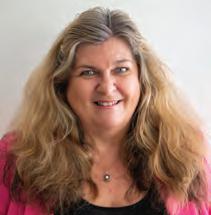
Stereotypes, prejudice, bias, generalisations … when it comes to perceptions of people, we can mistakenly tar demographic groups, genders and even nationalities with the same brush.
We’ve all heard of the ‘ugly Australians’ behaving badly on tour. Well, I am starting to believe that you can take just about anyone out of their own country, put them in holiday mode in a foreign land and sometimes bring out the worst in them.
I’ve just returned from a holiday overseas, where ill-mannered behaviour and downright mean-and-nastiness marred a cruise in the last week of the trip. One nationality of European tourists, in particular, was at fault. Their rudeness while the rest of us waited patiently in line, their loud conversations with no regard for those around them, rushing past others to take the lion’s share of available seating, piling mountains of food on plates at buffets, physically pushing, shoving and elbowing … many people were complaining. I’ve now put it down to survival mode – especially given the
summer crowds in the Mediterranean this year. I realised that I shouldn’t think badly of all that particular nation’s people.
It’s a bit like tired old perceptions of retirees and seniors. It may be 2024 but we’re often lumped into ageist categories, stereotyped as weak and vulnerable or ditherers and slow on the uptake, and ignored largely by retailers and marketers who can’t see past long-held assumptions of buying power.
We often aren’t seen as individuals with a lifetime of experience, knowledge and capabilities. We have had to deal with far more technology in our day-to-day lives than our parents or grandparents did at our age, adapt and pivot in our jobs as a result of the fallout from Covid, and learn to live without the respect we, as youngsters, afforded our elders. Often, we are competently doing the same jobs as younger people (sometimes better!).
As reporter Janine Hill discovers in this month’s cover story, over-55s are far more savvy than we are given credit for. Truly, we are older and wiser. But old stereotypes die hard, and it can be easy to be limited by other people’s expectations.
On a brighter note, nothing stops travel writer Nannette Holliday, who indulges in fine fare in Sri Lanka.
It’s another big read this month, so let’s get started!
Shirley Sinclair Editor

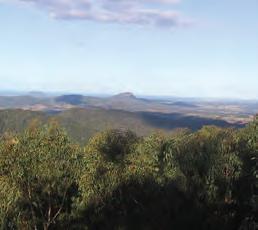



DISTRIBUTION ENQUIRIES distribution@yourtimemagazine.com.au or call 0419 746 894
PUBLISHER Michelle Austin, 5493 1368. EDITOR Shirley Sinclair, editor@yourtimemagazine.com.au
ADVERTISING ENQUIRIES 0438 717 210 or 0413 855 855, sales@yourtimemagazine.com.au FOR DIGITAL EDITIONS AND MORE yourtimemagazine.com.au
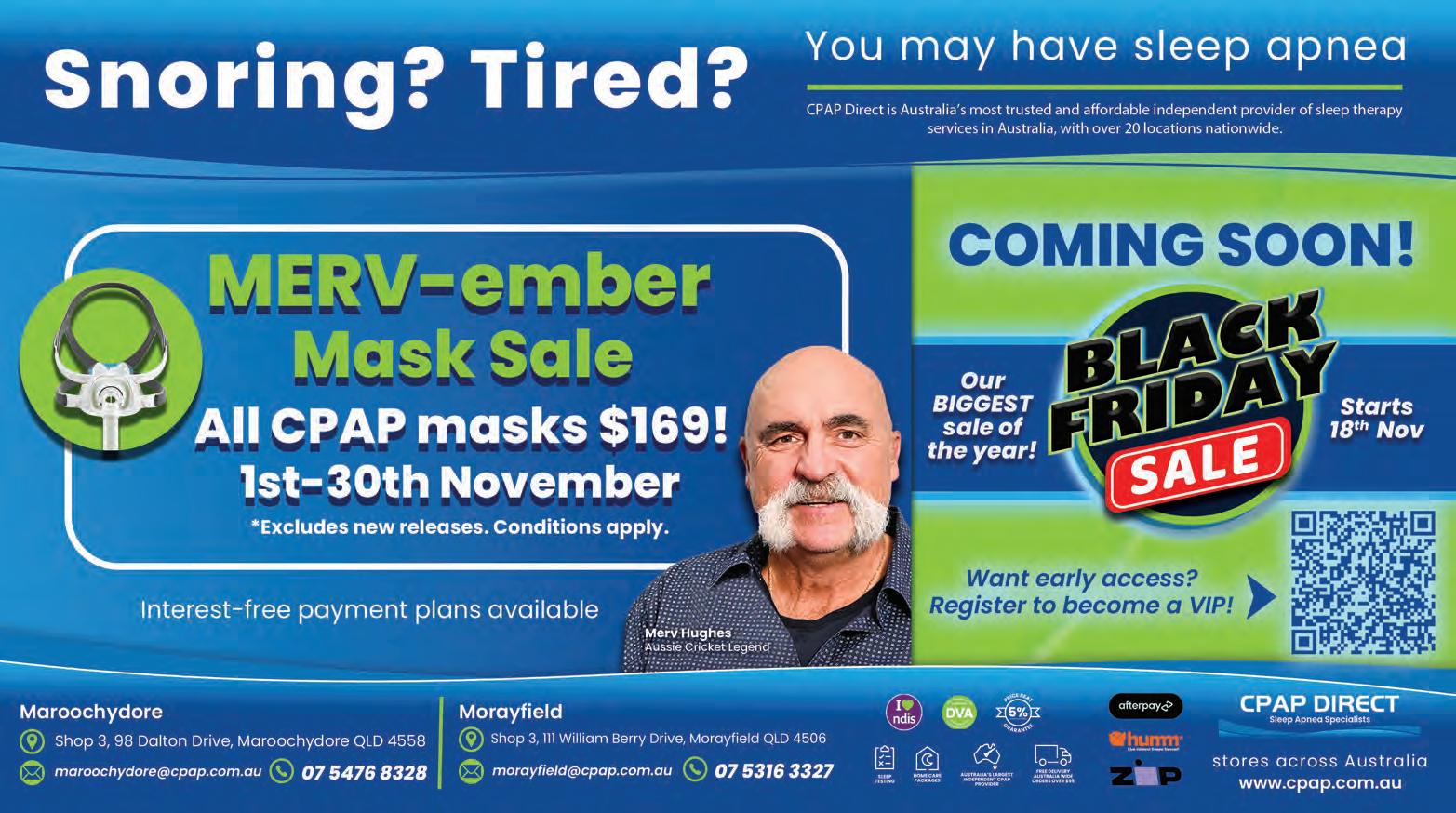
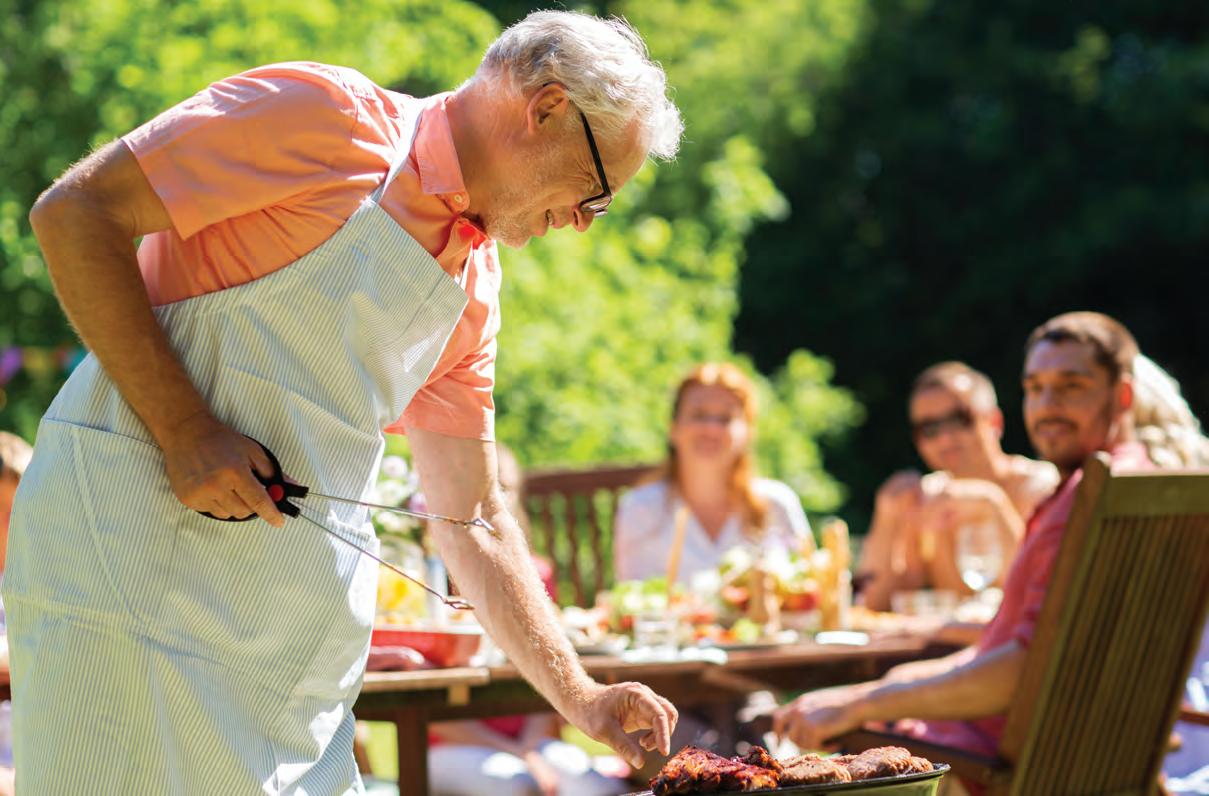
JANINE HILL reports that when seniors are wrongly portrayed in a negative light in the media, the masses may believe those descriptions and opinions to be true.
A70-something woman auditions for a voice role in a commercial. She receives compliments from the room but is told the client will make the final decision.
A call comes a few weeks later. It’s a knockback.
Although she is in the demographic group the advertisement will target, she does not sound ‘old’ enough for the part. She takes it as a complement and
pockets some cash for her travelling expenses. But how old is old?
Full of verve, she lost out to someone with a thinner, wavery voice – someone who sounded ‘old’.
Dr Andrew Hughes, a lecturer in marketing at the Australian National University, is concerned about the way older people are portrayed in marketing and advertising.
Dr Hughes has seen it countless






times before: the grandmotherly or grandfatherly type who has little purpose outside the home.
“A lot of our ideas, and lot of our marketing and advertising material, is based on a very outdated perception of older people,” he says.
He blames those on the other side of the generation gap for the way older people are presented in the media.
“A lot of the portrayal of older
people is done by younger people,” Dr Hughes says.
“And their ideas are often based on personal experiences.”
Dr Hughes says those behind the marketing often have no significant exposure to older people other than their grandparents.
Grandma baking biscuits or grandpa tinkering in his shed does not constitute a complete picture of them as people or of their lives, he says.
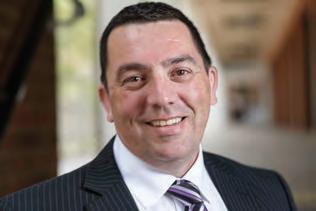
Dr Andrew Hughes

“They get this idea that older people are retired and doing very simple, at-home tasks – as though they don’t have a mind”
“They get this idea that older people are retired and doing very simple, at-home tasks – and it’s as though they don’t have a mind,” he says.
Dr Hughes likes to set his young students an exercise which involves them sitting down with their grandparents and asking questions about their lives.
It is not compulsory, because he knows that some do not have grandparents or that family relationships or distance might constrain contact, but it is a positive experience for those who do.

































“I get some really surprised people who realise once they sit and talk that ‘just because they are older than me, and their bodies are starting to fall apart, doesn’t mean that their mind is’.”
Darren Young, chief executive officer of the Queensland Council of the Ageing, is also concerned about a narrow portrayal of older people.
He takes issue with news reporting, which he says does not reflect the full spectrum of ageing or older people.
“What I would say is that the media, in general – and, particularly, the news media – under-report older people and that it often frames older people in the light of dependence and being past their prime,” he says.
“People are seeing older people in a negative light, as valueless, dependent on the system and dependent upon others.
“That’s probably a negative view and we’re further marginalising older people when all the messaging out there is about valuing youth.”
Mr Young says media reporting of ageing tends to be limited in range and
older people and keeping other people from getting the care they need, stories that portray older people as a burden on society.
“We are seeing that a lot. There was a study last year, and I think it was done mainly of news outlets. It was of something like 700 news articles and two-thirds of the stories were all about nursing homes and funding for nursing homes and problems older people were experiencing.
older people should be incapable.
Author Anna Johnston has also picked up on a subtle form of ageism: able-ism, where older people are considered interesting or valued because they carry on with youthful traits or abilities.
She said society still idolised youth, and older people were encouraged to ‘erase’ the signs of ageing by dyeing their hair or smoothing out wrinkles.
Ms Johnston, whose humorous novel The Borrowed Life of Frederick Fife focuses on an 82-year-old man and a case of mistaken identity, says less than three per cent of main characters in literature are over 80.

“People looking at this through a community lens are only seeing the very negative view of the older population. It’s basically portraying older people as very needy and, if it’s not doing that, it’s telling stories of older people being valueless and decrepit.
“If we look at news as the big way p eople get to understand the world, I think there’s more could be done.”
But Mr Young says the problem is not just the news, but what else is on our screens.

“I wanted to show not just an older character but an older hero who inspires hope”
propels images of older people as a burden or victims.
“We are not seeing some of the stories that probably could be showing a great diversity in the experiences of older people,” he says.
“We’re seeing stories about the extraordinary costs of aged care, hospital beds that are being taken up by












He says the main age range depicted on Australian television drama is 18 to 44, and although 15 per cent of the population is over 65, only 6.4 per cent of the people on TV are in the same age group.
“It’s not telling the real-world experience of the community. It’s not telling the real story of older people and their experiences,” Mr Young says.
He says the images being reflected of older people in the media, and the views of the community, could be disempowering.
“What’s going to happen is, that’s going to influence older people’s view of themselves and their views of people ageing.”
Mr Young says the occasional story about the achievements of an older person is often framed as happening “despite their age”.
That’s reinforcing the notion that
In her article, Beyond the Fountain of Youth: Embracing Authentic Ageing in the Media , she says the underrepresentation of truly old people sends a message about what society considers worthy of portrayal.
Ms Johnston grew up with her grandparents in the same house and worked at the same nursing home that her grandfather Fred lived in after being diagnosed with dementia.
While working in the nursing home, she was able to observe residents’ strength, resilience and ability to heal and grow, and the way her grandfather maintained his kindness to others –even with his failing memory.
It became important for her to use that in her book.
“I wanted to show not just an older character but an older hero who inspires hope and shows that worth, unlike eyesight, does not diminish with age or declining ability,” she wrote in her article.
Ms Johnston aspires to be an octogenarian and hopes that, if she is lucky enough to reach that age, that there are stories to read about embracing ageing as a valuable and meaningful part of life.

RARELY do you find such a decadent getaway combo so close to home Spicers Peak Lodge at Maryvale on the Scenic Rim will host the Shaw + Smith exclusive wine weekend on December 6-8. Guests can explore the retreat through immersive experiences and participate in a wine masterclass led by renowned winemaker Adam Wadewitz. Executive chef Gareth Newburn also will present a degustation menu, with Shaw + Smith wines. At $5450 per suite, the luxury package won’t be for everyone. But if you’ve always wanted to stay at Spicers Peak Lodge or are a big fan of the wines, perhaps make this an early Christmas gift. Call 1300 253 103, or visit spicersretreats.com/ offer/shaw-smith-wine-weekend/.

HERE’S an easy way to learn more about Indigenous culture and bush tucker. Maleny Botanic Gardens and Bird World has partnered with some of the region’s Traditional Owners, the Jinibara People Aboriginal Corporation, and local cultivators Brush Turkey Enterprises to create new Bush Tucker gardens. Two separate areas of the expansive gardens have been planted with Indigenous plants used traditionally in cooking and medicine by the Jinibara Peoples. Plant descriptions outlining their use in Indigenous culture have been created to educate visitors about the wide variety of uses. Plants include Davidson’s plum, emu foot, aniseed myrtle, lemon myrtle, a variety of native mints, quandong, native raspberry and the remarkable lemon sherbet coleus, so-named because of the lemon sherbet aroma the plant exudes when touched. For more details, visit malenybotanicgardens.com.au



GREASE is the word – and always will be. And now it’s back, in an all-new, multi-million dollar production starring Patti Newton as the much-loved Miss Lynch, Bobby Fox as Vince Fontaine and the incomparable Marcia Hines as Teen Angel. One of the world’s mostloved musicals takes us all back to Rydell High with Danny, Sandy, Kenickie, Rizzo and the whole gang and a medley of unforgettable hits that defined a generation: Summer Nights, Sandy, Hopelessly Devoted to You, You’re The One That I Want, Greased Lightnin’ and Grease is the Word. Visit qpac.com.au
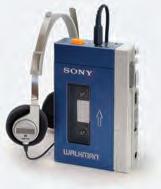
NOVEMBER 1979 is significant in the life of baby boomers – and not just because the Class of ’79 was about to graduate high school (I can’t believe that is 45 years ago!). The month marks the release of the Walkman cassette/radio: an invention that changed the way people listened to music and other audio. High fidelity went mobile for the first time, allowing people to ‘silently’ listen to their favourite tracks on the train, in the car, rollerskating down the street and in the library as if they were sitting alone in their lounge rooms. Covering both ears and being lightweight were key. And it started a trend that continues with today’s earbuds, earphones and noise-cancelling headphones. And no doubt on high rotation were some of 1979’ s biggest hits: My Sharona – The Knack; Do Ya Think I’m Sexy? – Rod Stewart; Heart of Glass –Blondie; Don’t Stop ’Til You Get Enough – Michael Jackson; Heartache Tonight – The Eagles; and Tragedy – Bee Gees.
WHETHER you’re a ‘believer’ or not, there’s no denying they’re crowd-pullers. Get ready for an unforgettable experience as the Two Psychics and A Medium National Tour kicks off in Brisbane on March 12 next year. The tour will showcase the extraordinary skills of three of Australia’s gifted psychics and a world-renowned medium: Annette Boyle, Anthony Grzelka and Julia Cartagena. Audiences will be treated to a one-of-a-kind live show that explores the mysteries of the spirit world. Two Psychics and A Medium promises to deliver an intimate and emotionally charged evening of spiritual connection, psychic readings and what they call messages from beyond. For more information and tickets, visit twopsychicsandamedium.com.au
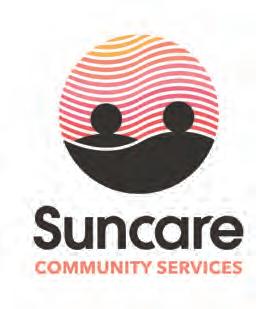



Bouncing
WE MAY take time for granted, but less so as we age.
While the 24-hour clock was introduced by military authorities to avoid confusion in telling the time, our modern computers, phones and Translink timetable still use ‘am’ and ‘pm’. It would seem whimsical for a visitor from another planet to find 11am is followed by 12pm.
They would also be bemused by the varied adoption by different states and territories of daylight saving, making cross-border dealings challenging.
Then, there is the confusion in dealing with the US style of expressing the date where they use the month, the day, then the year in their online documents.
While standardisation of time may appear to be a given today, in the early 19th

century when railways appeared and a timetable was required, it was a foreign concept.
Most citizens lived in rural areas where they synchronised their day with the season, the sun and agricultural cycles – maybe relying on a sundial more than a timepiece which was an expensive item beyond the reach of most of the population. The gift of a gold watch at the end of an employee’s long service signified the status associated with personal timepieces.
To provide a shared benchmark of time, clocks were erected on public buildings. But, there was no guarantee that they’d be synchronised. The time in one town often differed from another by several minutes, still based on local cycles in the day. Standard time zones were introduced.
No matter how we keep time, yesterday is the past, tomorrow is the future and today is a gift – that’s why we call it the present.










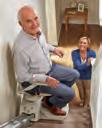

























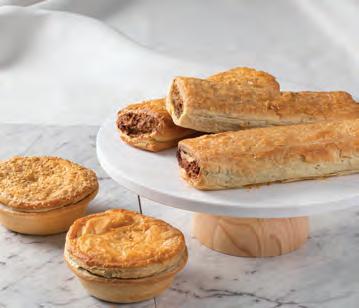
AUDIENNE BLYTH tells of convicts whose knowledge of the region, gained through contact with Aborigines, became invaluable to other pioneers.
QUEENSLAND has a convict heritage. From 1824 to 1839, Moreton Bay was a penal settlement for second offenders and once held more than 900 convicts.
A second offender was a convict who was already serving a sentence and committed another crime.
Some convicts at Moreton Bay believed they could escape the settlement with its harsh laws and floggings. Some failed with their lives but others became ‘wild white men’ living with Aborigines.
Perhaps prisoners were inspired by ticket-of-leave men Thomas Pamphlett and Richard Parsons and convict John Thompson, who were the first white men known to have lived with Queensland Aborigines. Working as cedar cutters in the Northern Rivers district, they were blown north to Bribie Island after a bad storm. Their lives were saved by the Aborigines.
In 1823, Pamphlett was able to show explorer John Oxley the river which he named the Brisbane. Pamphlett and
Parsons roamed north and were able to report on the resources of the Wide Bay and Sunshine Coast areas to authorities.
It was said that one-in-three convicts tried to escape the Moreton Bay Penal Settlement. Escapees who successfully managed to survive and live with Aborigines told their stories.
They were James Davis, ‘Durramboi’, (13 years), Sam Derrington, (five years), John Fahey, ‘Gilberri’, (11 years), and David Bracewell, ‘Wandi’, (14 years).
John Graham was adopted by a Noosa tribe who called him ‘Moilo’. After six years, he returned to the settlement and, with Derrington, volunteered to rescue Eliza Fraser and three others who had survived the wreck of the Stirling Castle in 1836.
With no survival skills or bush knowledge, lucky escapees met up with Aboriginal groups, travelled through the Sunshine Coast and were our first white explorers in the almost impenetrable scrub and rainforest.
Their knowledge of Aboriginal
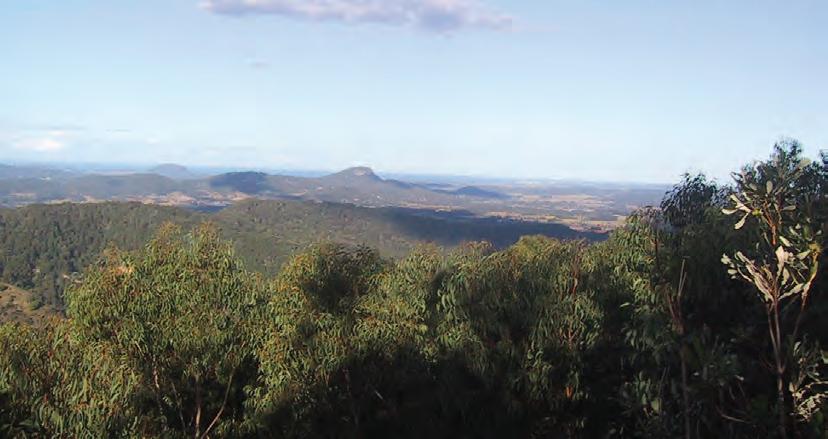
language, customs, geography and resources was valuable to authorities. When they eventually returned to Moreton Bay, these ‘wild white men’, as they were known, became useful as guides and interpreters.
Another convict but not an escapee, well regarded for his abilities, was Richard Jones – one of 270 convicts transported to Sydney from England on the James Pattison in 1837. He had been transferred to Moreton Bay as a second offender on board the schooner Curlew in 1839. He was described as a top sawyer and earned the nickname of ‘Bullock’.
When Andrew Petrie explored the districts to the north of Brisbane from 1838 to 1841, Jones travelled with him.
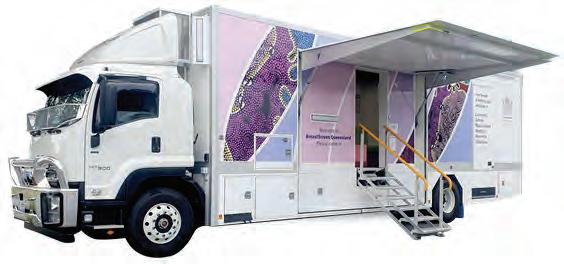

The Bunya Proclamation, 1842-1860, which had given settlement restrictions on the land between the Maroochy River and the Pine River, was repealed. In 1861, Jones was in charge of a band of timber-getters working on the Maroochy River. He was our first timber-getter. Jones was also a skilled bushman and accompanied William Pettigrew by horseback through the forests around Nambour in 1865.
Queensland became a separate state in 1859 and in came the timber-getters and pastoralists to the region. As they say, the rest is history.
Audienne Blyth is a member of the Nambour Historical Museum, open 1-4pm Wednesday to Friday and 10am-3pm Saturday.





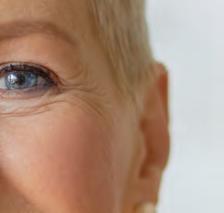




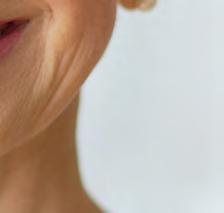



MILLIONS of Aussies are clueless about a financial decision that could impact their loved ones, new research by Finder shows.
A Finder survey of 1062 respondents revealed just five per cent of Australians have contributed to their partner’s superannuation.
Spouse contributions mean paying money into a spouse’s super during periods of low or no earnings or as a tax offset.
The research found a further five per cent didn’t know it was possible to contribute to their partner’s super.
The Australian Tax Office reports that as of the 2021 financial year, the average super fund balance for women between the ages of 65-69 was $403,038, and $453,075 for men of the same age.
Finder personal finance expert Sarah Megginson says taking time out of the workforce could seriously impact longterm returns on your super balance.
“Stay-at-home parents lose considerable superannuation in the child-rearing years, which then impacts in the long run into a loss of compounded earnings,” she says.
“If your partner is a low-income earner, you may be able to claim a tax offset on the first $3000 you contribute.”
Ms Megginson says it is important Aussies take their retirement nest egg
seriously. “Get educated about the state of your superannuation – what amount you have and how it’s invested,” she says.
“It can be really hard to manage extra super contributions in an environment of rising household and mortgage expenses but it’s important to plan for your future financial wellbeing, too.”
Ms Megginson says it’s not just about how many contributions you make:
“Choosing a top-performing fund could boost retirement savings significantly.”
Finder’s research found a worrying one in 10 (10 per cent) don’t have any superannuation.
TIPS TO MAKE THE MOST OF YOUR SUPER:
• engage in your finances. The best investment you will ever make is an investment in your own financial literacy. Learn how to do a budget, as well as the basics of investing.
• plan for potential career breaks. If you’re out of the workforce or working parttime for a period due to raising a family, plan for this if you can by making extra contributions to your super. Even a small contribution each month can make a big difference.
• start early and stay consistent. The power of compound interest is like magic for your retirement savings. Contributing regularly to your superannuation fund over an extended period can grow into a substantial nest egg..








New kitchens fitted with new appliances
• New flooring and furnishings
• Freshly painted internally and externally
• Spacious courtyard, landscaped gardens
• 2 Swimming Pools
• Men’s Shed and Bowling Green

• Modern Community Centre
• Walking distance to Translink Bus with transport to local medical centres and Stockland Shopping Centre
Secure your slice of idyllic retirement living in the heart of the Sunshine Coast at Sunset Palms Retirement Living, a welcoming community with resort-style facilities.
With a limited collection of brand-new retirement villas remaining in stage 3, seize the opportunity today to explore the vibrant lifestyle that awaits, or register your interest for the next stage, now under construction.

By Mocco Wollert
SAY the word ‘jewellery’ and we immediately think of women and how their faces light up.
Well, most women’s faces light up.
Some might pretend that it means nothing to them, but I don’t quite believe that.
From a very early age, little girls hang beads around their necks and have bracelets jingling on their tiny wrists – the more the better.
Put the words ‘pink’ and ‘bangles’ together and a little girl emerges.
There are many occasions in a woman’s life marked with jewellery –friendship rings, engagement rings, wedding bands. There are anniversary rings: from the ardent ‘I have known you six months today’ to the ‘is it really already our wedding anniversary again – how many years is it?’.
Generally, men seem to be out of the picture. Very few men wear any jewellery these days, apart from a wedding ring, which is usually pretty plain and not an elaborate work of art to match the engagement ring of the
bride. It was not always so. You only have to look at an old painting from previous centuries to find men hung with baubles like peacocks, earrings dangling from their earlobes. They did not wear wristwatches (which hadn’t been invented yet).
In our modern world, wristwatches were to a man what pink baubles are to a little girl.
However, as the gender definition is changing in our modern world, men are starting to wear the odd earring or a gold chain around their necks again.
Tattoos seem to be the modern young man’s adornment – and they cost as much as a gold chain. Not wearing ‘adornments’ has made it harder to find Christmas or birthday presents for the male of the species.
In my generation (how many times have I written this!), presents were set in a mould of some sort.
There was a list, which never varied. It contained handkerchiefs, socks, cufflinks, ties and tie pins, perhaps a book, pen and, of course, cigars (perish the thought now!). What do we replace these with?
Every man – and, for that matter, every girl – now buys a modern Apple watch or some such electronic device for themselves.
Long gone is the time when an

elegant wristwatch was something a man desired.
European women of the upper class wore a lot of jewellery. It showed that their husbands were wealthy men. I wonder whether that is still the case.
During war time, wealth was preserved by sewing jewels into hems of skirts. Today’s modern young woman probably would not know how to put a stitch into fabric.
I have a friend who wears up to three rings on every finger, big gold earrings and several bracelets – all solid gold – no matter where she is going. She told me she was afraid to leave her jewellery at home.
Long gone are the times when a rich lady handed her jewels to her maid to put them away at the end of the day.
May your jewels be safe and give you joy.
Email mocco.wollert@bigpond.com

By Cheryl Lockwood
“I CAME for the weather and stayed for the welfare.”
I overheard this said at an Australian Citizenship ceremony and smiled at the joke. In reality, I felt absolutely honoured to attend the event.
My daughter-in-law was being sworn in as an Australian citizen on this particular morning, along with 385 others from 47 different countries.
I had no idea of the number of people who choose this country as home every year. There was another ceremony scheduled for the afternoon –and this was in just one little part of the country.
Born-and-bred Aussies know that it’s a pretty good place to live. Some might say the best.
This year is the 75th anniversary of Australian citizenship. In 1949, just seven people were sworn in as citizens at the first ceremony in Canberra.
Since then, more than six million people have taken the pledge.
On this day, Sunshine Coast Mayor Rosanna Natoli attended. She looked flawless – just as she did on our television screens as a journalist – but I was surprised how petite she is in real life. Dances by the First Nations Peoples were impressive and the singing in language was moving. Those receiving their citizenship certificates were required to stand and make the pledge together:
“From this time forward, under God,


















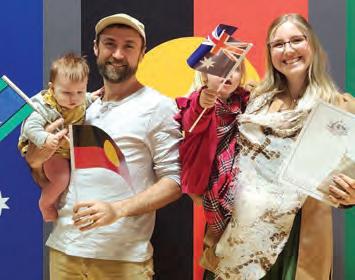
I pledge my loyalty to Australia and its people, whose democratic beliefs I share, whose rights and liberties I respect, and whose laws I will uphold and obey”.
There are two versions to choose from (one mentions God, the other does not).
Our newest citizens may choose which version they prefer, but once they have recited the words out loud, their Australian citizenship is complete.
It may sound simple, but for some it has been a long road to get to this point, involving visas, financial costs and the passing of a citizenship test.
I can’t imagine what some asylum seekers have faced to live safely in this country. Learning English must be a huge hurdle for some. Plenty of native English speakers struggle with our spelling and grammar, so it must be difficult for those learning it as a second language.
No Australian event would be
complete without our national anthem –both verses. Yes, the national anthem does have a second verse and, apparently, the first verse does not start with, “Australians all let us ring Joyce, for we are onion-free”.
Some years ago, I volunteered to teach English in Thailand. One night, meeting up with volunteers from other countries, we all decided to share our national anthems. The best effort came from a four-year-old Thai child, who sang beautifully. The Canadians, English and Americans put in reasonable attempts.
The Aussie contingent mumbled through the second verse with some embarrassing gaps. Returning home, I made it my business to learn the whole thing, in case I ever found myself having to sing it in a foreign country again.
Don’t ask me to sing my high school hymn. I can’t recall a word of it, but it’s a long time since I had to sing it. Of course, it was difficult to concentrate when we were sweating our way through assembly on plastic chairs which creaked when we moved – the result being farty sounds, which caused the immature among us to laugh uncontrollably.
I saw the paperwork (and computer work) my son and his wife had to complete to prove that she was deserving of citizenship here. The ceremony was both enlightening and enjoyable and I’m glad she made the grade.
Visit lockwoodfreelance.com


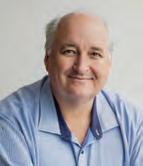
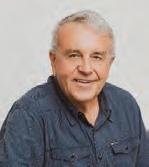
Located beside the beautiful Lake Kawana, on the Sunshine Coast, we are long-term locals who have been helping locals for nearly 50 years with their legal matters in a timely, professional and affordable manner. WITH YOU THROUGH IT ALL 07 5438 8400 L2 Suite 12, 9 Capital Place, Birtinya info@gmclawyers.com.au www.gmclawyers.com.au


EDIN READ offers a step-by-step plan of action if bogus ‘pop-ups’ try to attack your computer.
There seems to be a very common scamming attempt at the moment. A pop-up, which can cause a lot of damage, keeps appearing on clients’ computers. This pop-up says it’s from Microsoft and that the computer has been infected. In reality, this pop-up itself is the scam – and it’s not from Microsoft.
Let’s walk through what to do in case this happens.
Imagine this: you’re browsing the web, and suddenly your computer changes screens, displaying an alert claiming to be from Microsoft, stating that your computer has been infected.
A voice starts speaking, saying the same thing, and you’re unable to move your mouse or type anything. The screen instructs you to call ‘Microsoft’ on a strange number, and you can’t find a way to leave the screen.
The way to get out of it is reasonably simple, but in the adrenaline of the moment, it might feel like the only way to escape is to call the number. Do not, under any circumstances, call that number!
That number, in reality, connects to a call centre with people waiting to take calls from distressed victims. Stay on the line
long enough, and they will get you to download remote-access software, which enables remote control from wherever they are in the world. Then, they’ll either a) make a transaction online and steal your details or b) ask you to log into internet banking, where they will falsify accounts and siphon money out.
In this case, your bank will likely ask you to get a professional clean of your computer, which is a costly process. This can all be avoided, of course, by following these steps on a Windows computer:
1. Press Control + Alt + Delete at the same time on the keyboard (Ctrl + Alt + Del).
2. Press ‘Task Manager’.
3. Find your web browser listed in the table (for example, Microsoft Edge or Google Chrome).
4. Right-click the web browser.
5. Select ‘End Task’.
6. Turn off your internet or shut down your computer.
7. Seek help from a professional IT service to ensure your computer hasn’t been further infected, and do not access any banking services until this is confirmed. This will dismiss the pop-up, and there’s a chance nothing further will

happen. However, there is also a chance that something could have been infected. So, it’s a good idea to get in touch with an IT service to check and clean your computer if needed.
If you have called the number or your device has been infected in some other way, firstly, take a breath. It’s okay – this happens to many people every day, and you are not alone. Some people’s full-time job is to come up with elaborate scam techniques to gain your trust and scam you – and they are good at what they do.
Next, disconnect your computer from the internet/WiFi in settings. Do not turn it back on. Call your bank immediately. Have the bank cancel your cards, pause your accounts, and change your password. Scammers move quickly: so should you.
Then, get an IT service to clean your computer. Your bank will likely ask you to do this anyway, before they unlock your accounts, as this is essential. It’s a bit like having a doctor remove a splinter: if the splinter stays in, the infection will grow. It’s best practice to back up your files before any of this happens, to an external drive. We don’t want them being held for ransom or deleted and unable to be recovered. Do this sooner rather than later. Put it at the top of your priority list today. A small investment now will save you a lot of trouble down the track. Still not sure what to do? Give us a call: we will help you in your time of distress. Edin Read is founder and chief technician at Greyology Tech Support for Seniors. Visit greyology.com.au










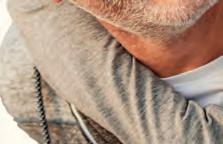








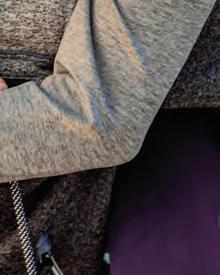
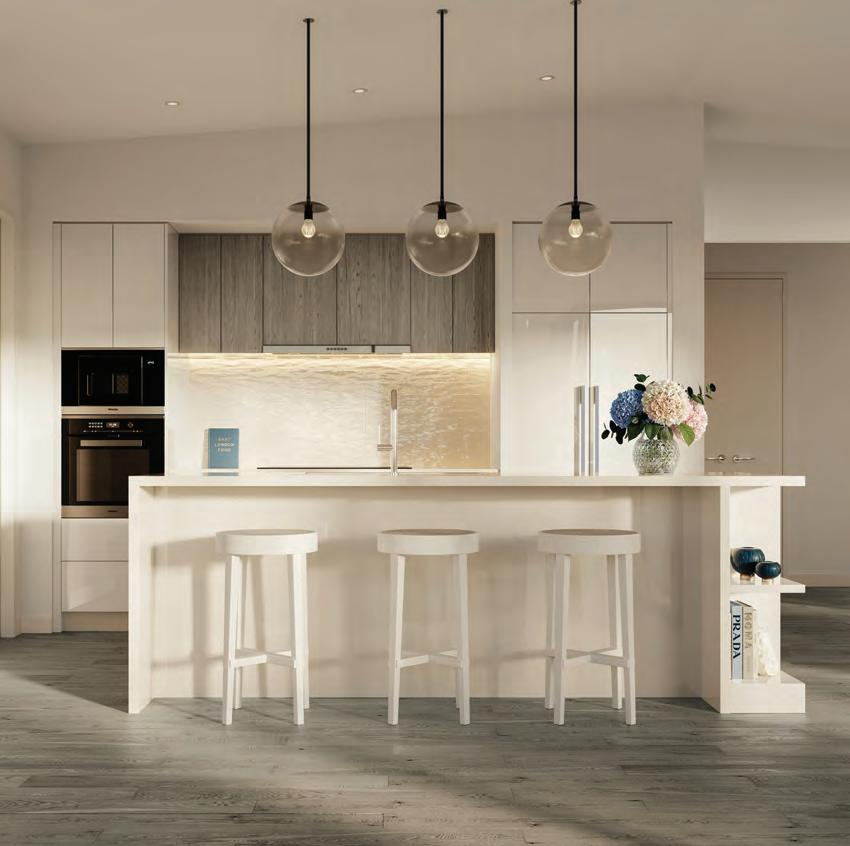
CAITLYN HUTH helps us ease into aerobic exercise, minus any unnecessary huffing and puffing.
Aerobic or cardiovascular exercise is highly regarded for its wideranging benefits to overall health and wellness. It is especially helpful in improving cardiovascular health, mental clarity, joint mobility, energy levels and respiratory function.
There are various ways to engage in aerobic exercise, and this guide will assist you in customising an approach to align with your specific goals.
First up, choose an activity that you enjoy and can easily access. Options include walking, running, cycling, swimming, rowing and hiking – essentially, any movement that increases your heart rate and breathing rhythm. Your selection should be based on personal enjoyment, physical ability and accessibility.
Next, think about structuring your aerobic training in terms of intensity and duration. Generally, workouts with higher intensity require shorter durations before needing rest, while low-intensity exercises can be performed for

longer periods. Here are three key training intensities to consider:
• high intensity: this method includes shorter, challenging exercise intervals that are hard to sustain over long durations. It is especially beneficial for those aiming for higher-performance goals, as it helps safely push your upper threshold capabilities. Engage in short bursts lasting from 30 seconds to two minutes, followed by appropriate rest periods. Activities might encompass stair climbing, jogging, uphill walking, faster swimming, cycling against resistance or lively dancing.
• medium intensity: this level is manageable for several minutes and requires attention to regulating your breathing pattern. Suitable activities include hiking, walking on an incline or dancing.
• long, steady state: this approach consists of easy, sustainable activities that can be maintained for extended periods. The effort feels light, breathing remains effortless, and the heart rate rises only slightly.
The aim is to build efficiency with your performance. To do that, focus on keeping a breathing rhythm while exercising, and then doing deep and slow breaths during recovery to help the body return to its baseline.
Your ability to recover well and be ready to go again is a greater indicator of your aerobic fitness, rather than just pushing hard in one effort.
Caitlyn Huth is an exercise physiologist at Full Circle Wellness. Call 5456 1599 or visit fullcirclewellness.com.au
HAVE you ever been to a come-and-try day?
In our local area (and, I am told, in many other places Australia wide), clubs and sporting organisations run come-and-try days.
These are generally free, or a small fee or donation applies.
Locally, we have all sorts of sporting and exercise groups that provide free trials. Naturally, the group does it to promote their club and to assist with recruiting.
The come-and-try day is a fantastic way to have a go at something you may have been wanting to try for some time, and you do not have to be out of pocket to do so.
Gyms do a similar thing. In fact, many gyms will offer more than just a day trial: some offer up to a week.
A come-and-try day may be just the thing to get you interested in a particular program. Clubs and organisations these days have so much competition that they often spend a lot of time on recruitment. In line with
promotions, discounts may apply. Clubs and organisations now more than ever are offering discounts to seniors, and that makes sense. With an ageing population that has an increasing life expectancy, the senior or retiree market is growing. Check out regional media or local government (councils within Queensland and Australia often keep databases on clubs and organisations).
Start with a phone call and don’t forget to ask if discounts apply. Our exercise group has tried dragon boating, outrigging, pickle ball, croquet, gate ball and tennis – all for free. In most, if not all, of these activities we have received detailed instructions and some have provided initial coaching.
Come-and-try days are a win/win situation: the organisation may benefit from your continued custom, and you get the chance to try something for free or very low cost.
Tom Law is the author of health and exercise-related books. Visit facebook.com/Tom’sLaw or call 0409 274 502.
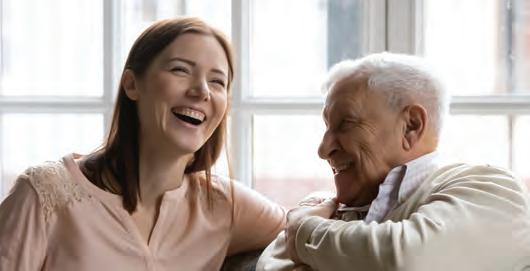

























KAILAS ROBERTS reports on the latest research on one of the newly determined risk factors for dementia.
Over the past few years, The Lancet, a prestigious medical journal, has commissioned reports from experts about modifiable risk factors for dementia and cognitive decline. The most recent report came out in July this year. In total, 14 different factors have been identified –ones that may have an impact from childhood all the way through to later life.
Each time a report is written, more factors are determined and the percentage of cases of dementia that could potentially be prevented or delayed appears to increase. The 2024 report suggested that perhaps up to 45 per cent of cases would fall into this category.
One of the newly determined risk factors is high midlife LDL cholesterol. It was suggested that up to seven per cent of cases of dementia worldwide could be delayed or avoided if LDL cholesterol is optimised at a patient and societal level.
Cholesterol, in fact, serves very necessary and helpful functions in the human body and brain. First of all, it is an integral part of the structure of the brain and, in particular, the cell membranes. It is also part of myelin: an insulating coating around nerve fibres that helps
them efficiently transmit messages. It influences the changeability (plasticity) of synapses, which are the gaps between nerve cells – again, a critical part of messages being transmitted throughout the brain. Cholesterol is a precursor to several hormones which play important roles in brain health.
Blood tests for cholesterol can differentiate between LDL-cholesterol (the so-called ‘bad cholesterol’) and HDL cholesterol (or ‘good cholesterol’). Ideally, you want to have low levels of LDL cholesterol and high levels of HDL cholesterol, and the reverse scenario is certainly not desirable. LDL cholesterol contributes to dementia risk in a number of ways, including by causing atherosclerotic disease (diseases of the blood vessels caused by build-up of cholesterol containing plaques on vessel walls) which impacts blood flow to the brain, and by inducing insulin resistance and chronic inflammation.
Some people have a genetic propensity to high LDL cholesterol, but it is also something amenable to lifestyle interventions and medication treatment. Chief among the former includes reducing
The patient becomes the carer (and the carer the patient) as CHARLIE GRIFFITHS and his wife try to battle through a night to remember.
Ilearned a valuable lesson last week. I had an atrial fibrillation episode on Wednesday evening and when my blood pressure (BP) climbed to 220/120 and my pulse rate was 120, I bowed to my wife Barb’s demands and allowed her to call for an ambulance.
The usual deal: great ambos put me at ease and compassionately transported me to the nearest Emergency Department (ED), 30 minutes away, where I was triaged and allocated a bed.
An urgent blood test showed I wasn’t having a heart attack. So, it was just a matter of waiting until the symptoms settled enough to sign me out. Within an hour, my BP was under 200, pulse mid-90s. An early despatch looked imminent. Then, it got interesting. Barb drove into town to support me and drive me home. However, at the ED entrance, she rolled her ankle on a concrete step and would have crashed heavily had it not been for a quick-thinking ambo who caught her just centimetres from the tarmac.
She managed to stagger to Bed 3 and collapsed into my bedside chair. She was in obvious distress. So, the nursing staff triaged her and arranged for a doctor to attend ASAP.
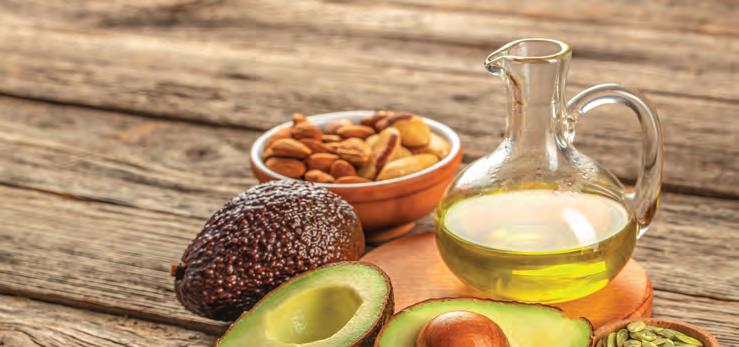
your intake of saturated fat, found in red meat, full fat dairy products and processed foods. Limiting these foods and replacing them with sources of healthy fats (for example, olive oil, nuts and avocados) is advised.
Interestingly, the link between dietary cholesterol intake and LDL cholesterol levels is far less robust. Increasing fibre in your diet can also help, and there is some evidence that plant sterols (found, for instance, in certain margarines) may be beneficial. Exercising regularly may help lower LDL cholesterol levels as well with weight management. Alcohol and smoking can both elevate LDL cholesterol levels, and these should be addressed.
There is some controversy about medications for lowering cholesterol. The most popular drugs are the statins, and these medications perennially appear on the best-seller lists of drugs. Statins generally work by reducing cholesterol
production in the liver. There is ample evidence that, in general, their use is associated with a reduced risk of dementia, though some users do report cognitive problems while on them (brain fog and poor memory) and there may be a subset of people who do not do well long term. This is perhaps in part because of a pathological reduction in brain cholesterol which we have seen to be a critical part of brain structure and function.
It does make me think, however, that the lifestyle interventions should be the primary treatment and statins only used when these are not working. Lowering LDL cholesterol is low-hanging fruit when it comes to reducing dementia risk and is worth discussing with your doctor.
Kailas Roberts is a psychogeriatrician and author of Mind Your Brain: The Essential Australian Guide to Dementia, available at bookstores and online. Visit yourbraininmind.com or uqp.com.au
Meanwhile, my BP troughed in the mid-160s and my pulse was back to the low-90s.
The keyboards were clacking – I was ready for discharge, even though my heartbeat was still irregular and I felt quite unwell.
They disconnected me from the monitoring devices, and Barb and I switched places. She was much more comfortable with her leg elevated and I was grateful to be seated.
After much prodding and jumping about, to say nothing of a couple of involuntary profanities, the decision was made to place Barb’s lower leg in a plaster cast. The trainee doctor and solitary nurse struggled to navigate Barb’s longer-thanaverage legs. So, I was commandeered to assist with the cast installation. All went well and the damaged joint was stabilised.
A strip of impressive painkillers for Barb, and we were both discharged. The nurse arranged a wheelchair for Barb while I wandered into the darkness to locate and retrieve her little car.
I reversed into the ambulance zone where the nurse and I funnelled the trussed Barb into the passenger seat.
Once home, I took on the darkness

again and located a pair of crutches in the garden shed.
Barb was a little rusty with these after a hip replacement 18 months earlier, but we managed to navigate the potholes in the front yard and ascend the steps into the house. Considerable fumbling ensued as Barb was disentangled from her apparel, toileted and placed in bed at 2am.
Next morning at 8am, Barb was summoned to appear at Radiology before revisiting ED for a professionally conducted moon-boot fitting.
It was only when the chaos abated that I had a chance to reflect on my own situation.
I was grumpy. My head was throbbing, my heart was still out of rhythm, I wasn’t game to check my BP and I hadn’t eaten since the previous evening.
It was only after a tense verbal fracas with Barb that I realised the reason for my grumpiness: I felt displaced and neglected
when her swollen ankle attracted more attention than my boring heart monitor.
I felt ashamed that I might feel resentment toward the amazing lady who had done so much for me during my long-term illnesses, treatments and recuperation.
When I stopped feeling sorry for myself, my headache and anxiety chest pain subsided, and a sense of calm settled on the household.
Gotta go now. Barb’s trying to do the dishes while balancing on crutches. What could possibly go wrong?
If this article resonates with you, comment at charliegriffithscoaching. com/contact
Charlie Griffiths is a certified life coach and Neuro Linguistic Programming practitioner dedicated to helping fellow professionals thrive with a chronic disease or serious injury.
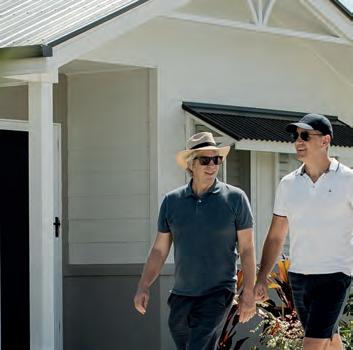
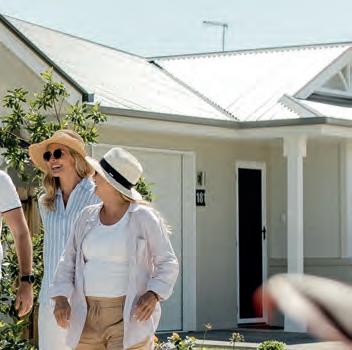










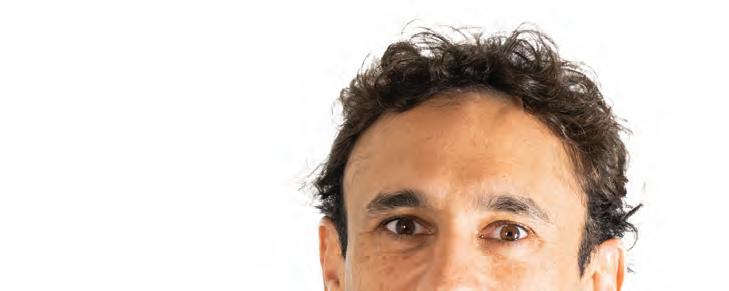

Associate Professor

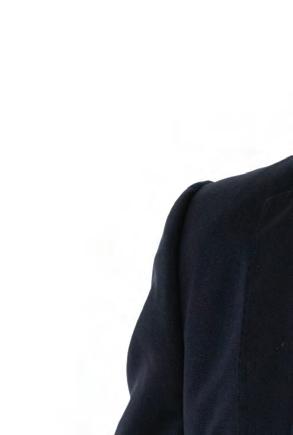
Kristopher Rallah-Baker

TREATMENTS AT A GLANCE
• Cataract Surgery
ker NCE

• General Ophthalmology
• Macular Degeneration
• Pterygium Surgery







BRUCE McMAHON checks out a new breed of hybrid powering up from Asia for the Australian scene.
The electric motoring business is sparking up with any number of new machines headed for Australian showrooms.
The busiest of electric car makers remains the Chinese, with Zeekr and Chery, amid those with fresh offerings in the light car class.
The Korean-built Hyundai Inster runaround, due early next year, is another promising battery/electric car for urbanites.
Among interesting hybrids – with petrol and electric power – on the way is more Chinese product in BYD’s Shark ute, reportedly at a competitive price to upset traditional one-tonne dual cabs when it arrives, perhaps before 2024 is done.
Now on the scene from Europe, in terms of badge name anyway, is the all-electric Smart#1 and Smart#3 with a Smart#5 to come.
All are so-called SUVs with #1 and the bigger #5 more the hatch-wagon style, and the other #3 a hatch-coupe.
All are products of collaboration between Mercedes-Benz design and China’s Geely battery/electric vehicle

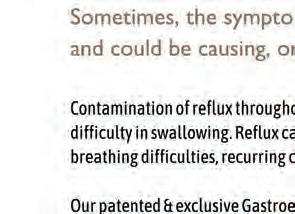


platform. “Three keywords are building blocks for the new car: love, pure and unexpected,” says Smart’s head honchos. So there – well on trend for the 21st century.
The last Smarts seen here about 10 years back were small, combustionpowered, mini cars and roadsters.
Different, for sure, but more suited to Euro tastes and petite folk back then.
This time, with increasing urban emphasis on economical and emissionfree motoring (plus parking spaces at a premium), the bigger and bolder electric Smarts from $54,900 may find more favour.
There are three versions of the Smart #1 with Pro+, Premium and Brabus models at up to 4.3m long, 1.8m wide and 1.6m high.
The first two have 200kw of power supplied by a single electric motor to the rear wheels and up to 440km range for the Premium; the $67,900 Brabus version has 315kW and two electric motors for all-wheel drive.
Smart #3 has similar power and drive arrangements but sits on a slightly longer wheelbase with a slightly wider,





more aerodynamic body. So, its driving range is between 435km and 455km and retail prices are up a tad, too: from $57,900 for the Pro+ to $70,900 for the Brabus version.
The 4.7m long Smart #5, which isn’t here yet, is a mid-sized SUV wagon with a promised 740km battery range and a host of add-ons for the adventurers.
This time, the smaller Smarts are brighter, more handsome and more useful than before.
Plus, there is a deal of promise in the marriage of MB design and Chinese engineering.
This time, the Smart cars will fit four average-sized Australians with a two-metre tall driver allowed decent operating space.

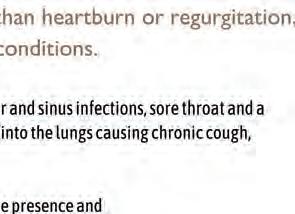
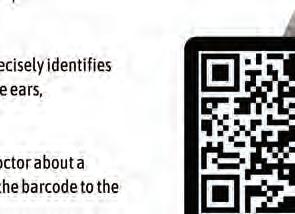


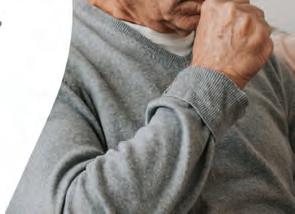


Headroom’s best in the #1, but still fine in the #3. And cabin interiors have a premium feel through top-class design, fit and finish – as should be the case when, as before, the Smarts are sold under the Mercedes-Benz halo and through Mercedes showrooms in Brisbane, Sydney and Melbourne.
Both #1 and #3 are good-looking machines (though, perhaps the coupelike lines of the Smart #3 are just that tad more sophisticated) and are armed with today’s usual array of safety, info and entertainment gear.
In a busy, busy motoring world, these Smarts stand out in this particular niche of battery-electric vehicles with a good deal of style and, on the face of it, a decent amount of substance.










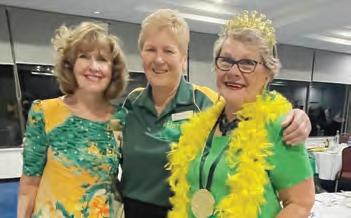
CALOUNDRA Evening VIEW Club
members recently enjoyed their 29th anniversary dinner.
Held at the Caloundra Power Boat Club,
BUDERIM Bridge Club’s recent AGM welcomed new president Greg O’Connor and his committee to ensure the continued smooth running of the group.
One of Greg’s first tasks was to oversee the ProAm Pairs Day: a bridge session for mixing fun with logic as experienced members partner with newer players to form newfound friendships.
The Madhatter’s theme created a novel atmosphere, allowing everyone to delight in the lightheartedness of the session.
Members continue to enjoy the social and mental stimulation of playing bridge either Monday nights (no partner needed), Wednesdays or Fridays.
Visitors or new members can contact buderimbridgeclub.com
members dressed up in the Australia Olympic Team theme colours of green and gold. VIEW zone coordinator Vonda presented 20-Year Service Pins to Nancy and Lynette, while Sue and Enid received their 10-Year Service Pins. The cake was cut and shared with those present, and the happy occasion was celebrated with dancing to the tunes of musician Billy Guy.
Club members enjoy a busy social life while achieving their purpose of raising funds to sponsor the education of 13 disadvantaged students who are in The Smith Family’s Learning for Life Program.
To join, call Di on 0400 473 193.
THE Sunshine Coast Nomads Golf Club has raised significant funds to support Urban Angels Community Kitchen in a mission to expand its food program, feeding the homeless and less fortunate across the region.
The fundraising initiative, which took place during the club’s annual charity golf day, garnered generous donations from members, sponsors and local businesses.
“It’s heartwarming to see our members and the broader community rally together for such a worthy cause,” club captain Gary Wilson says.
To learn more about the golf club, visit sites.google.com/ nomadsgolfsunshinecoast.org/ homesite/home

THE Sunshine Coast Art Group will present its annual Spring Artisan Market fundraiser on the weekend of November 9 and 10.
The market at 1 William Parker Place, Buderim, behind the basketball stadium, will feature stalls with arts, crafts, pottery, sewing and a club raffle, plus a coffee van. For more information, email info@ sunshinecoastartgroup.com.au or visit sunshinecoastartgroup.com.au/ spring-artisan-market-nov24
CALOUNDRA Family History Inc. (CFHRI ) will hold its final meeting for the year on Thursday, November 21, at 1.30pm at the rooms at Corbould Park.
Guest speakers will be CFHRI members involved in the War Histories of our Soldiers Project who will present their findings along with family memorabilia.
To book or join, visit caloundrafamilyhistory.org.au













THE Inner Wheel of the Sunshine Coast is holding a huge sale of recycled and good-quality clothing.
The sale is on Saturday, November 9, at Unity College, 47 Lamond Crescent, Caloundra West, from 9am to 2pm, with women’s, men’s and children’s clothes, toys and accessories. Prices are set at: $2, $5 and $10.

IF YOU’RE looking for a pastime, sport and social contact, croquet may be calling you.
Croquet is a unisex sport, played as equals, socially and competitively. It’s easy on the body, played with a mallet, usually in an upright position, with no twisting. Croquet is played on a flat, grass lawn the size of two tennis courts. Players with mallets hit large coloured balls through hoops, or hit each other’s balls away. The club provides all equipment for beginners. If you’d like a free introductory game, members of Headland-Buderim Croquet Club on Syd Lingard Drive in the sporting precinct would love to see you. Call Helen on 0429 433 339.



MANY people looking to retire often downsize when they move into an over-50s lifestyle resort. But that wasn’t the case for Steve and Susan Szekeres who bought one of GemLife Gold Coast’s Premium Emerald Collection homes.
“When we saw the plans of the home design, the block and its position surrounded by the bushland views of the protected koala corridor, it was exactly what we wanted, and we bought it straight away,” Susan says.
“That was about two-and-a-half years ago. It was even the same size as our family home on a Mudgeeraba acreage, so we were not even downsizing for our retirement.”
Susan is looking forward to the completion of her new home with husband Steven, 73, who previously worked creating special effects for films.
The pair are impressed not only with their own home, but also all the Emerald Collection residences at GemLife Gold Coast.
“All the homes come with elevated designs and upmarket bespoke inclusions and, like ours, are located on prime sites,” Susan says.
“We couldn’t be more delighted. We just love the high ceilings, huge butler’s pantry, high-quality floor coverings, spaciousness, impressive fittings and outstanding outlook plus more.
“Everything has been done to such a fabulous quality.
“Our new home is one of a kind, designed specifically to suit our large

block, and is everything we ever wanted.
“It is not split-level like many of the other Emerald Collection homes, but it does share the amazing views they capture because we are positioned up high at the top of a hill.”
GemLife’s Emerald Collection of exclusive premium homes has been created to meet the expectation for luxurious over-50s living for the sophisticated buyer.
Emerald Collection homes are available to inspect at GemLife resorts at the Gold Coast, Tweed Waters and Rainbow Beach in Mid North New South Wales.
Call 1800 560 768 or visit GemLife.com.au/emeraldcollection
THE Sunshine Coast attracts interesting people from around the globe who have made their mark on the world, and Dr Robert (Bob) Burns is no exception.
Bob had worked at universities in the United Kingdom, South Africa, Australia and Brunei, but has now retired to Bli Bli at Halcyon Landing.
He is an experienced author with more than 20 textbooks, mainly in the areas of management psychology, research methods and statistics, and applied psychology in the education and health fields.
His final job provided considerable interesting memories, involving being headhunted to go to the University of Brunei with a contract signed by the Sultan to mentor local staff, write courses and help generally with the development of a Commonwealth university.
Bob and his wife enjoyed life there so much that they stayed 10 years, playing bridge regularly with other expats (as Bob says, watching TV in Bahasa Malay was not all that informative).
During the enforced reduced lifestyle mandated under Covid restrictions, he spent his time writing more books.
All three, now published, are nonfiction, and discuss contemporary issues that should be of interest to people in Southeast Queensland.
The titles are:
1. The Human Impact of the COVID-19
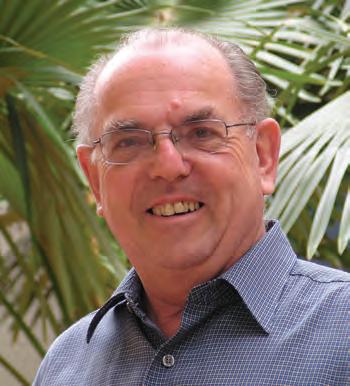
Pandemic, published by Springer, 2023, available on Amazon as text and eBook.
2. Sex and Gender: Issues and Dilemmas, Inspiring Publishers, Canberra, 2023, available on eBay.
3. Common Sense Science of Climate Change, published by Austin Macauley, London, 2024, available on Amazon as text and eBook.
The computer keys are still getting hot as Bob types away on two more book projects.
One explains the behavioural symptoms, diagnosis and treatment of autism spectrum and attention deficit hyperactivity disorders for parents, teachers and other care providers to facilitate early diagnosis and greater understanding of the conditions. The second is focused on the developing renewables energy transition and the major issues and dilemmas it creates.
THE Australian Men’s Shed Association has recognised the Coolum group among unique and innovative Men’s Sheds and Shedders at an annual awards event.
As part of the Australian Men’s Shed Association’s (AMSA) 10th National Men’s Shed Gathering in Murray Bridge, South Australia, the 2024 National Men’s Shed Shed
Awards were announced to recognise Men’s Sheds going above and beyond for members and their communities, as well as individuals for their contributions to Australia’s Men’s Shed movement.
“This year, we saw some truly unique and innovative activities in our sheds, and we commend the creativity of these shedders who are doing great things for
their communities,” says AMSA executive officer David Helmers.
The award for Men’s Health was shared between Coolum Men’s Shed – for its innovative music festival that combines with health activities, and the Eden Men’s Shed in NSW – for the Far South Coast Men’s Health Musters.
Other recipients were – Innovative Fundraising Activity: Jurien Bay Men’s
Shed, West Australia; Sustainability: Men’s Shed Wagga Wagga, NSW; Shedder Of The Year: Graham Barnard, Bellbowrie Moggill Community Men’s Shed and Shed West Community Men’s Shed, Queensland; Shed Of The Year: Macclesfield Men’s Shed, South Australia; and Ted Donnelly Award – Outstanding Contribution To The Men’s Shed Movement: Paul Sladdin.

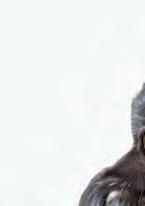

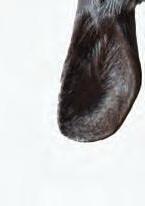



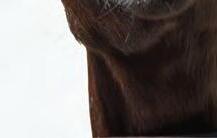


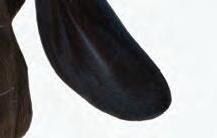



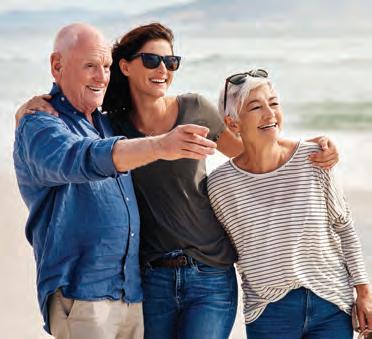
WHILE we have heard in the news about parents helping their children onto the property ladder, it now seems that more grandparents are stepping up to help their grandchildren achieve home ownership.
Recent research reported by McCrindle reveals that younger generations are increasingly turning to their grandparents, rather than their parents, for help in navigating the challenges of today’s housing market.
The research shows 12 per cent of Gen Z have received financial assistance
from their grandparents to buy a home. This marks a shift in how younger Australians are securing property, as the ‘bank of mum and dad’ is no longer the only source of help.
In fact, it’s becoming clear that many grandparents are taking an active role in helping their grandchildren achieve milestones such as home ownership, by releasing equity in their own property.
In addition, releasing home equity can allow grandparents to support their grandchildren in other ways as well, such as paying for private school fees to set them up for success in the future.
This growing trend reflects not only the deep family bonds between grandparents and their grandchildren, but also the financial pressures facing
MANY Gen X Australians, unlike previous generations, are facing retirement with the challenge of relying predominantly on their own superannuation contributions, rather than a government pension.
Many find themselves underprepared.


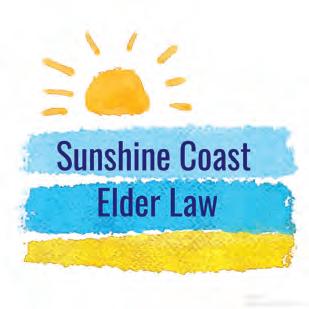
younger Australians more generally.
“We continue to see more and more grandparents and parents looking to share their wealth with their family now when it makes the most sense, rather than waiting until they leave an inheritance,” Inviva CEO Andre Karney says.
While reverse mortgages today come with important government protections including the no negative equity guarantee, it’s important for potential borrowers to fully understand the terms and implications of releasing equity, including the impact on their estate and the potential reduction in equity over time.
Visit inviva.com.au/yourtime or call 1300 222 223.

Rising living costs, longer life expectancies and often insufficient super balances mean that this generation may struggle to maintain its desired lifestyle during retirement. As Gen X (born 1965-80) approaches retirement, exploring options to boost income streams while preserving capital becomes crucial.
One such option is real estate credit funds. These funds can offer a compelling solution for people looking to generate stable income with lower volatility when compared with listed investments on the stock market. Real estate credit funds operate by lending funds, secured against property, in exchange for interest payments. Investors in these funds benefit from regular income distributions, often at higher rates than those offered by standard fixed-income products such as bonds or term deposits. Because these funds are secured against real estate, they
may appeal to investors seeking a capital stable investment. The appeal of real estate credit funds lies in their ability to offer stability and higher income, making them an attractive option for Gen X retirees looking to bridge the gap between their superannuation and retirement needs. By diversifying into real estate credit funds, retirees can enhance their income while maintaining a focus on capital preservation – ensuring they are better equipped for the longer retirement horizons many now face. So, while many Gen X Australians feel underprepared for retirement, exploring such opportunities may help boost income and achieve greater financial security in later years.
Visit capitalpropertyfunds.com.au
Disclaimer: The information in these articles is of a general nature only and does not constitute personal financial or product advice. Any opinions or views expressed are those of the authors and do not represent those of this publication, or people, institutions or organisations they may be associated with in a professional or personal capacity unless explicitly stated.







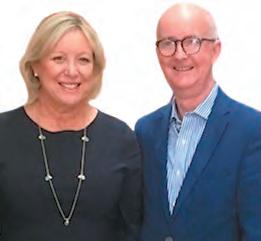
By DON MACPHERSON
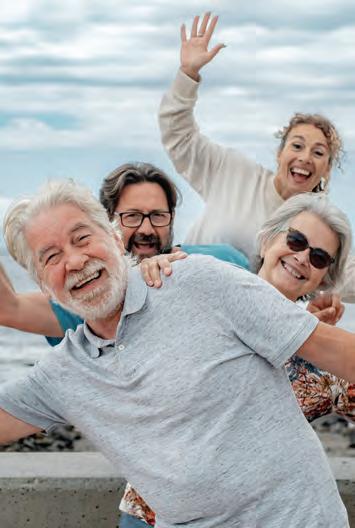
The choice to move to a retirement village is primarily a choice for community rather than merely a financial investment.
If you are focused solely on the financial outcome, you are asking yourself the wrong question.
People do, and should, buy for lifestyle as a major consideration. It’s a choice for companionship, community involvement and security.
However, as with any significant transaction, remember the adage: “Let the buyer beware”.
People buying into a retirement village need to understand that the transaction is very different to buying and selling a house in the way they have been used to throughout their lives.
It involves ingoing, ongoing and outgoing costs and benefits that need to be understood.
Retirement villages provide different ways of creating rights to reside in their properties. In essence, you buy a right to reside for an indefinite period.
1. Leasehold. This is the most common way that retirement villages offer their properties to incoming residents. The lease contract creates a right to reside for an extended period (usually 99 years – though, we are yet to see someone outlive their lease). A lease is registered in the Titles Office. There is no stamp duty. Sometimes there is capital gain, but not usually. General
s ervices fees apply. Normally there are exit fees.
2. Licence. Less common than leasehold (at least in Queensland), a licence creates a right to reside but is not registered against the title deed. However, there are additional protections provided under The Retirement Villages Act. Usually there is no capital gain. There is no stamp duty. General services fees apply. Normally there are exit fees.
3. Manufactured/relocatable homes/ over-50s resorts. This model involves owning the house, but not the land. Because you own the home, there is usually a modest capital gain possible. There is no stamp duty. The owner pays a site rental to have a house on the land owned by the operator. There are no exit fees.
4. Freehold. This is the way that people are used to owning property. They buy the property (like buying a house) and can sell it at the end. They pay stamp duty. They get any capital gain (and bear any loss). The title is registered in the Titles Office. It is more like buying a unit in an apartment building and is subject to a body corporate structure. Body corporate fees, rates and water

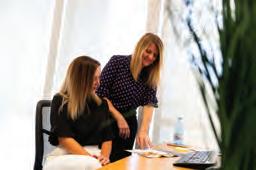

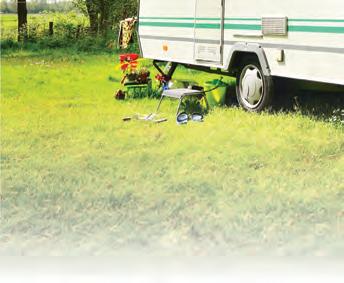
charges apply. Freehold is rare in the retirement village space.
Whatever the ownership model, all retirement living contracts provide extensive rules in relation to occupation of the home in which you live.
There are always ongoing fees while in the village. There are usually significant fees payable at the end of the ownership period – called various names including exit fees, or deferred management fees. Exit fee percentages vary across the industry and can be based on the incoming payment, or the resale figure.
Other exit payments, such as renovation costs, reinstatement costs, costs of sale, legal costs and valuation fees vary from contract to contract, and operator to operator. Some allow for capital gain (and loss). Some do not.
Retirement living contracts are always long and complex (often running to 100-plus pages). Specialist advice (legal and financial) should be sought before entering into a contract for any type of retirement living arrangement.
Sunshine Coast Elder Law is expert in all forms of retirement village contracts. Call 1800 961 622 or visit sunshinecoastelderlaw.com.au












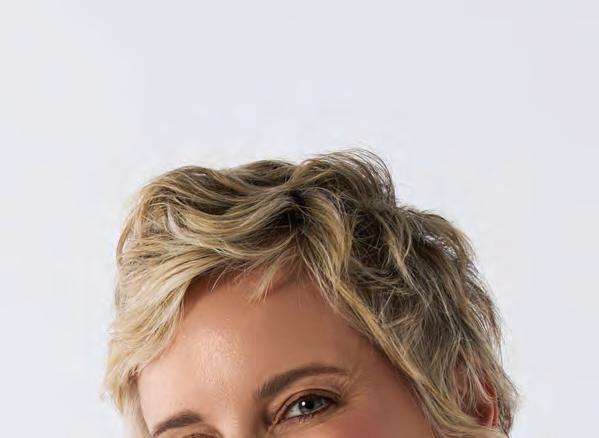

Dr Dunay Schmulian
Clinical Audiologist





SERVICES AT A GLANCE

• Hearing Tests
• Hearing Aids & Rehabilitation

• Tinnitus Treatment
• Wax Treatment



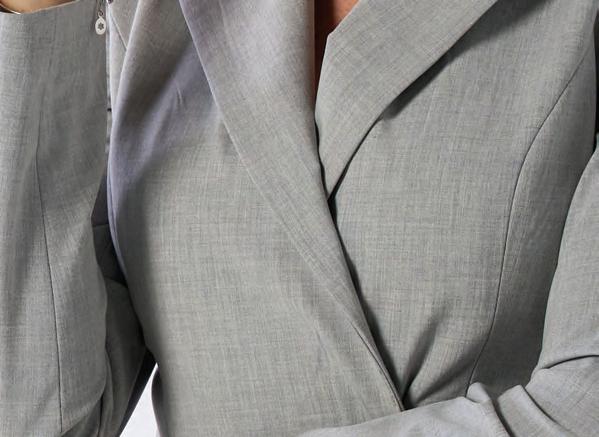


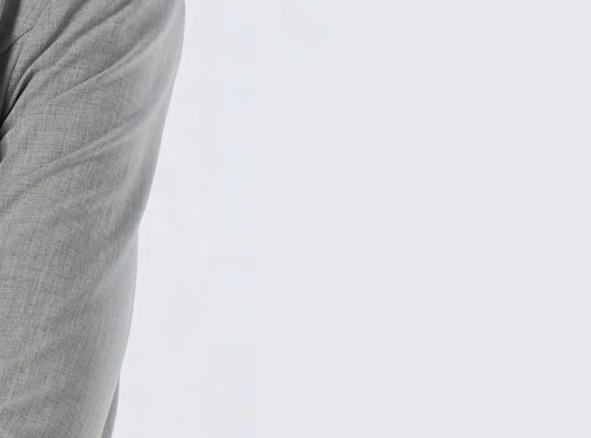
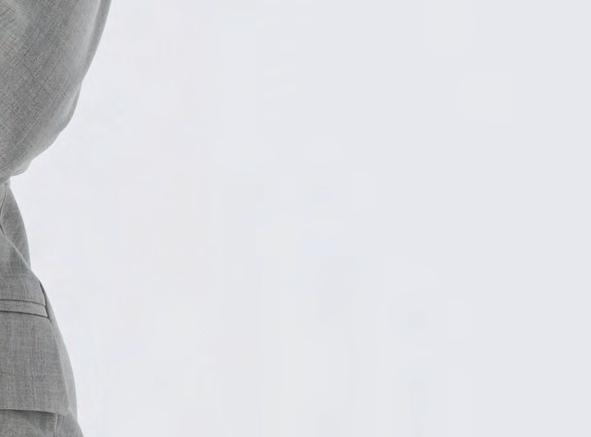






















HOW TO ENSURE A RESTFUL NIGHT’S SLEEP
CPAP Direct has become a trusted name in sleep therapy solutions, dedicated to supporting those who experience sleep apnea.
Offering a wide selection of CPAP machines, masks and accessories from leading brands, the company ensures that every customer can find products tailored to their unique needs.
This focus on personalised support sets CPAP Direct apart as more than just a retailer: it’s a committed partner in helping people achieve consistent, restful sleep.
Understanding the importance of CPAP therapy: sleep apnea, characterised by disrupted breathing patterns during sleep, affects quality of life and can lead to severe health issues if left untreated, from heart complications to chronic fatigue. CPAP therapy (Continuous Positive Airway Pressure) remains one of the most effective solutions, providing continuous airflow that keeps airways open throughout the night. CPAP Direct’s knowledgeable team understands the life-changing
impact that well-matched therapy equipment can have, striving to make every experience straightforward and tailored to individual health needs.
Innovative products and ongoing support: CPAP Direct has advanced machines such as the popular ResMed AirSense 11 and Fisher & Paykel SleepStyle series, known for features including auto-adjusting pressure, humidifiers and easy-to-use interfaces.
Accessories such as replacement masks, hoses and chambers are also available to ensure that customers have everything they need to maintain and enhance their therapy over time. Beyond providing high-quality products, CPAP Direct goes the extra mile with support services, including troubleshooting, mask fittings and equipment advice. This level of assistance creates a seamless experience, especially valuable for those new to CPAP therapy who might need extra guidance.
Personalised care and expertise: every customer


benefits from the expertise of the CPAP Direct team members, who understand the challenges of adjusting to sleep therapy.
Personalised care, offered in-store and over the phone, is at the heart of the service, making it easy for customers to find answers to questions about their equipment, travel options or maintenance routines. This commitment fosters an environment where users feel supported, informed and equipped to tackle sleep apnea with confidence.
Whether you’re considering CPAP therapy for the first time or are an experienced user looking to upgrade, CPAP Direct has everything you need for a better sleep.
Visit cpap.com.au
CHOOSING the right hearing aid can significantly improve your quality of life. Here’s a guide to help you make an informed decision.
1. Consult a professional: they will conduct a thorough hearing assessment and provide recommendations based on your hearing loss and lifestyle. If the discussion starts with a price, be cautious.
2. Understand your hearing loss: hearing aids come in various types and styles, designed to address different levels of hearing loss.
Knowing whether you have mild, moderate or severe hearing loss will guide your choice.
3. Consider your lifestyle: think about your daily activities. Do you spend a lot of time in noisy environments or do you prefer quiet settings? Different hearing aids offer features such as noise reduction and directional microphones that cater to specific needs.
4. Features: look for options

including Bluetooth connectivity, rechargeable batteries and telecoil technology for better sound quality in public spaces.
5. Comfort and fit: hearing aids need to be comfortable for extended wear. Ensure you get a proper fitting and trial period to test their comfort. In-the-ear models may be more discreet, while behindthe-ear models can offer better amplification.
6. Trial and adjustments: hearing aids should come with a trial period. Use this time to see how they perform in various settings.
Lisa Burley is one of Queensland’s most experienced audiometrists. Hear4Good is an independent and locally owned business at Golden Beach and Caloundra. Call 5477 0144.

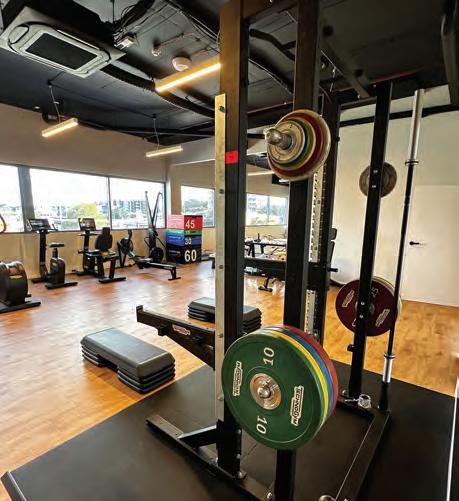
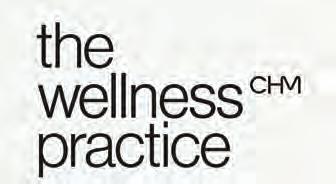
Griffith University’s Ethos Project researchers are seeking participants aged 65 and older to trial an innovative heat-health warning app.
This app is part of a larger project aimed at developing an in-home early warning system to help older adults stay safe during heatwaves, which lead to more deaths in Australia than any other natural disaster.
Last summer, the Ethos team installed its tablet-based system in 89 homes across the Sunshine Coast, Moreton Bay, Ipswich, Brisbane, Logan, the Southern Downs and the Gold Coast, gathering data over three months to better understand how heat affects older adults. Results from the first trials showed that despite 90 per cent of homes having air-conditioning, average temperatures recorded indoors were hotter at 27C than outdoor averages, recorded at 25.4C.
This summer, the Ethos team is trialling a mobile app version of the system which will provide real-time alerts and personalised advice to help users manage

AUSTRALIA has the highest rate of skin cancer in the world, so every Aussie needs to be informed and take action.

indoor heat more effectively. The team is also looking for a small portion of participants to trial the app alongside a Fitbit, which they can keep after the trial ends.
To be eligible, participants must be over 65, have a smartphone (either Android or iPhone), live in Southeast Queensland or Hervey Bay, do not have a cognitive or psychological disorder and be willing to complete a confidential health history questionnaire.
Throughout the trial, the Ethos team will provide ongoing support, and participants will have the opportunity to share their experiences with fellow participants.
Non-Fitbit participants will also receive a $50 gift card as a ‘thank you’ for their involvement.
For more information and to register, email ethos@griffith. edu.au, call 5552 7903 or visit climate-ethos.com
The Cancer Council website states that about two-in-three Australians will be diagnosed with skin cancer during their lifetime. In 2024, about 2000 Australians will die from this disease. Almost twice as many men as women will die from melanoma. But there are ways to limit and prevent damage when the UV level is 3 or higher:
• slip on sun protective clothing that covers as much skin as possible
• slop on SPF50 or SPF50+, broad-spectrum, waterresistant sunscreen – apply 20 minutes before going outdoors and then every two hours
• slap on a hat – broad brim or legionnaire style
• seek shade
• slide on sunglasses.
During National Skin Cancer Action Week (November 17-23), Cancer Council Australia is urging men aged over 40, especially, to be SunSmart and reduce their skin cancer risk.

THE festive season presents an opportunity to reflect on how hearing impacts communication and socialisation.
Many of our loved ones have hearing loss, which makes communication more challenging. Two specific challenges present themselves with family and friends:
• hearing when there is more background noise in the environment
• hearing when people are more than an arm’s length away.
Here are some proven, simple strategies to improve communication:
1. The speaker: be aware – a) ensure that your face is well-lit and that you are not standing with your back to an open window. Many people living with hearing difficulty benefit from having access to speech reading even when they use hearing devices. b) avoid turning away from the listener when you are speaking. Life often forces us to multi-task. Especially in
times when we are cooking larger meals and spending more time in certain environments, try to minimise packing away dishes, or looking for small plates in cupboard, while you are communicating.
2. The setting: plan. It is helpful to consider seating arrangements with hearing in mind. Hearing aids work most effectively when the wearer is within a metre of the person speaking.
3. Technology: encourage. Encourage loved ones with hearing aids to use them during conversations, even if they are sceptical about their benefit. Notice small improvements in their communication and comment on these. Be specific: for example, did you know that you did not ask John to repeat himself once during lunch? A little encouragement goes a long way.
WORDS: Dr Dunay Schmulian, clinical audiologist. Cotton Tree Audiology, Maroochydore. Call 5471 8068 or visit cottontreeaudiology.com.au


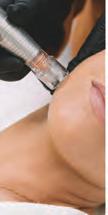



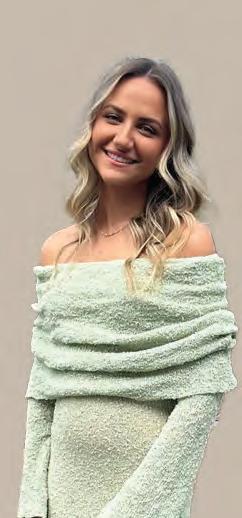



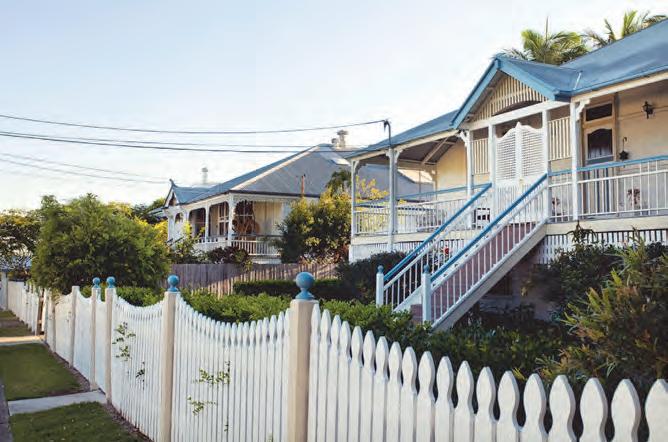














crab feasts to street food, Nannette Holliday sharpens her
The soft, juicy, tender morsels of crab and tangy chilli-garlic sauce are coating the inside of my cheeks. I’m salivating in crablicious heaven.
If only the vibrant tangerine walls of Colombo’s 400-year-old, repurposed Dutch Hospital mortuary could talk.
This is the nightly cracking, crunching, slurping and sucking as patrons gouge every ounce of gorgeous juiciness from the lanky red shells, happily enjoying the mess as they hoe into their deliciously fresh seafood feasts at the Ministry of Crab.
My ever-so-helpful waiter Omai came to my rescue by expertly cracking my show-stopping, two-kilo monster Crabzilla, allowing me to enjoy every mouthful and then soaking up the sauce with a mountain of freshly oven-baked kade bread. In 2011,











coast. As unruly Indian Ocean waves crashed over massive granite boulders on the beach, and monkeys swung gleefully in the tree branches above us, threatening to steal my dinner before it reached the table, Anuradha delicately sprinkled a variety of spices over meats and vegetables. I learned how to combine them sparingly. The emanating aromas stirred my hunger glands in anticipation of the ruby tandoori chicken dip, coconut sambal, green bean curry and tempura prawns developing before my eyes.
If you’re a foodie like me, you’ll love Sri Lanka. Rice to roti, sensational street foods, the freshest vegetables, tenderest meats, tastiest curries, and succulent seafood –they’re all served in equally unique settings with accompanying beverages.
I enjoyed sunset dinners on pristine stretches of crystalline sandy beaches and atop rusty red cliffs, the gentle sea breezes tousling my hair while I watched the unbridled surf roll in.
chef Dharshan Munidasa established Ministry of Crab because Sri Lanka exported its best crabs and seafood. This way, the celebrity television chef allows locals and visitors alike to enjoy them. And tonight, I’m ever-so grateful.
If you think Sri Lankan meals are endless rice and curries, think again.
Eating deliciously fresh crab wasn’t on the radar when I planned my 12-day holiday. But it’s been the perfect hoorah to an array of delightfully unique dining experiences around the island.
While Sri Lanka is renowned for its spices, they’re used to enhance the various dishes. I learned this from chef Anuradha Gunathilake during my private beach cooking class at Resplendent’s Wild Coast Tented Lodge on the island’s southeastern






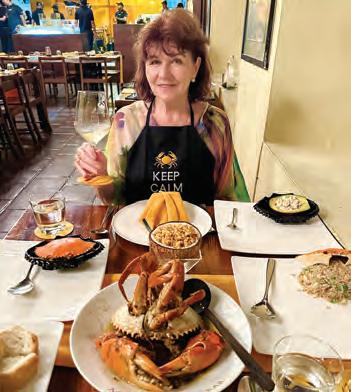
waded in ankle-deep cool water to our high cloth-covered tables to enjoy sunset drinks and snacks whipped up by our chef at a table beside us.
I breakfasted on traditional fresh coconut and hopper eggs in historic heritage hotels, savoured sweet fresh fruits and street food samosas at Pettah Fresh Market, and Saravita wrapped in betel leaves at Galle Face Green night market. Then I toasted the sun setting on another glorious day in paradise with a local Rockland dry gin and canapes at Virticle by Jetwing rooftop bar in Colombo.
On a Float Negombo cruise across Negombo Lagoon, I was serenaded by a solo guitarist strumming delightful tunes as we

A seven-course gourmet dinner cooked in front of me by executive sous chef Ishara Wijesinghe, at Cape Weligama Resort’s fine dining restaurant Tableau, was the most memorable. From the exquisite, melt-inyour-mouth, zucchini-wrapped crab mousse to fresh butter-poached lobster tail, and Sri Lankan lagoon prawns atop tender pink beef fillet strips, my stomach and mind were in gastronomic heaven.
But when Thilina, the Surf Bar manager at Cape Weligama, described Ceylon Arrack as their breakfast drink during a masterclass, I almost sprayed my mouthful during a fit of laughter. Arrack is like whiskey but naturally distilled from coconut flowers. Ceylon Arrack is top of the range, and while smooth, my preference remains the second: the Vat 9 Family Reserve. Neither will replace my champagne for brunch.
After a guided Dunkeld Tea Factory Tour in Sri Lanka’s cool and refreshing UNESCO World Heritage Central Highlands, I also have a new appreciation for tea. Bernard’s narrative and tea tasting of Dilmah’s complete range was an eye-opener, especially as it’s still handpicked on the surrounding steep and mountainous slopes.
The Central Highlands is unlike other parts of this stunningly beautiful tropical
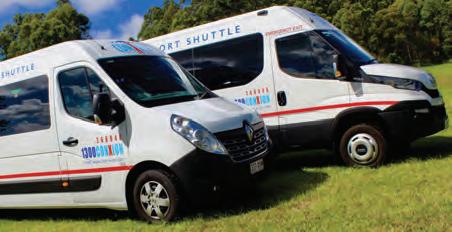


island. Dubbed ‘Little England’, it features many quaint British colonial-style towns and buildings nestled among the fertileladen hills, about 1830m (6000 feet) above sea level. Each is a lasting tribute to the country’s colonial past.
Whether you travel to this region by train or drive the winding mountain roads, you will encounter numerous cascading waterfalls, deep gorges, clusters of whitewashed houses tittering precariously along the slopes, and verdant tea plantations snaking across the steep hillsides.
Cloaked in its jungle greenery, the Central Highlands is a treasure trove of old and new, just waiting to be unearthed. Discover the history of the old capital of Kandy, or take a tuk-tuk from Ella to spy the blue train crossing the Insta-famous Nine Arch bridge. Stop for a cup of pekoe tea and step back in time at the nearly 200-year-old Grand Hotel in Nuwara Eliya. I also didn’t expect my safari in Yala National Park to be equally as good as any I’d experienced in Africa. Yala is the country’s second-largest park, covering 979 sq km, and is home to the largest population of leopards.
We explored many habitats, from jungle, semi-arid scrublands, grassy plains, and scenic coastal lagoons to scattered historical ruins and artefacts. I revelled in the beauty of the countryside, families of Asian elephants, water buffalo, spotted

deer, sloth bears, peacocks, white-breasted sea eagles and more.
Although a mere drop at 65,610 sq km, cocooned by the Indian Ocean, this small island, previously known as Ceylon, is so diverse and packed full of welcoming surprises that no matter where you go, what you see and do, you’ll feel like you’re enjoying multiple holidays.
HOW TO GET THERE:
A 10-hour direct flight with Sri Lankan Airlines to Colombo’s Bandaranaike International Airport daily from Melbourne and Tuesday, Friday, Saturday and Sunday from Sydney. Visit srilankan.com
WHERE TO STAY:
Colombo, Radisson Colombo, Marine Drive with a comfortable rooftop lounge, bar, pool and restaurant overlooking the Indian Ocean. radissonhotels.com/en-us/hotels/ radisson-colombo
All-inclusive Resplendent Resorts, the only Relais & Chateaux resorts in Sri Lanka – Ceylon Tea Trails, Wild Coast Tented Lodge and Cape Weligama. resplendentceylon.com
WHAT TO DO:
Let local Sri Lankan tour operator Sargia curate your journey. sargiasrilanka.com

STEP aboard an AmaWaterways river cruise, and you’ll find yourself at the intersection of history, innovation and sheer passion for exploration.
Celebrating more than 22 years of redefining the river cruise experience, AmaWaterways has become synonymous with luxury, innovation and an intimate connection to the rivers that weave through some of the world’s most stunning landscapes.
From the moment you step aboard, you’ll feel the rhythm of the river carrying you to the heart of Europe’s most enchanting destinations. It’s more than just innovative ships – it’s about waking up every morning to a new vista, as grand cities and storybook towns reveal themselves along Europe’s iconic rivers.
Whether you’re exploring the


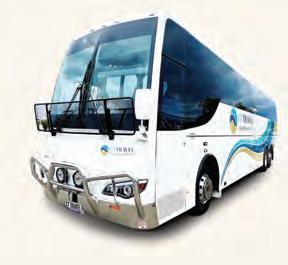

picturesque gardens of Monet in France, wandering the medieval streets of Strasbourg or admiring the castles that line the Rhine, AmaWaterways takes you beyond the surface, offering an immersive journey into the heart of each destination.
AmaWaterways itineraries are thoughtfully curated to connect you with the essence of each place. Every excursion is designed to bring history, culture and natural beauty to life. Picture yourself biking through Austria’s scenic Wachau Valley or hiking to the ancient fortress of Dürnstein, where Richard the Lionheart was once held captive. From the grand palaces of Budapest to the melodic hills of Salzburg, AmaWaterways ensures that every moment feels like a new discovery. Contact your local Travellers Choice agent to save up to $3000 per stateroom, with a complimentary upgrade and $50 onboard credit. Visit travellerschoice.com.au
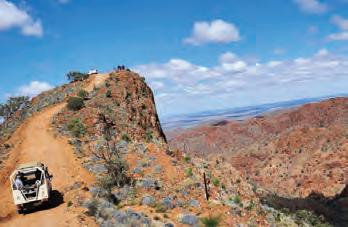
FEBRUARY 2025
Golf Tour - Norfolk Island (8 Days)
MARCH 2025
O’Reillys (4 Days)
Carnarvon & Wallaroo #1 (8 Days)
APRIL 2025
Norfolk Island (8 Days)
Alpine High Country to Murray Delta (12 Days)
MAY 2025
Red Centre to Top End (18 Days)
JUNE 2025
SW Qld Outback Loop (12 Days)
Lightning Ridge (7 Days)
JULY 2025
Carnarvon & Wallaroo #2 (8 Days)
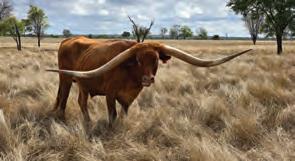
AUGUST 2025 Nth Qld Savannah (12 Days) Fraser Island Whale Watch (4 Days)
SEPTEMBER 2025
Toowoomba CoF (4 Days) Flinders Ranges (11 Days)
OCTOBER 2025
Princess & Kangaroo Island (11 Days)




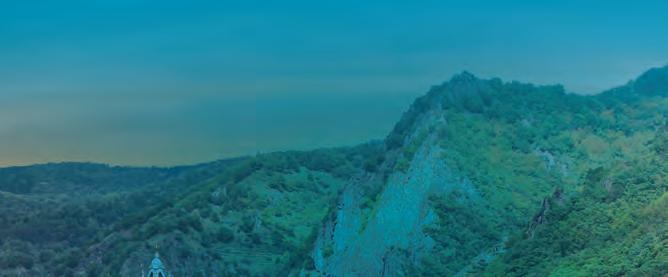



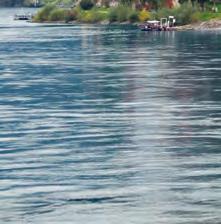




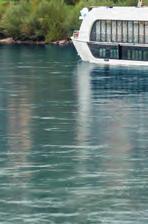


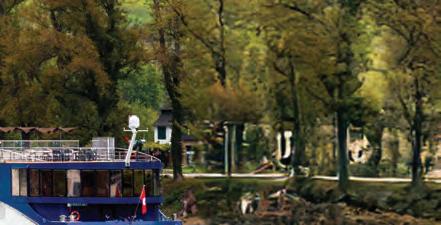


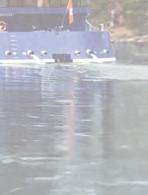


Step aboard an AmaWaterways river cruise and feel the rhythm of the river asitguidesyouthroughtheheartofEurope’smostenchantingdestinations as it guides you through the heart of Europes most enchanting destinations

this storied river has inspired generations of artists, poets and musicians.
Highlights Budapest • Bratislava • Vienna • Weissenkirchen • Grein • Linz • Passau • Vilshofen
Valid for travel Select dates 17 March - 27 December 2025 7-night river cruise from $5,088*pp

Discover fairytale castles, historic vineyards and the stunning remnant of a world frozen over with glaciers as part of this dreamy Rhine River cruise.
Highlights Basel • Strasbourg • Ludwighafen • Rüdesheim • Cologne • Amsterdam
Valid for travel Select dates 12 May - 29 December 2025 from $5,088*pp

Cruise from the French capital, Paris, where energy sizzles, and let Normandy entice you with its stunning coastline, incredible food and artistic beauty.
Highlights: Paris • Les Andelys • Le Havre • Normandy Beaches • Caudebec-en-Caux • Rouen • Vernon
Valid for travel Select dates 25 April - 08 November 2025
7-night river cruise from $5,988*pp
IT’S time to start making travel plans for next year, whether you’re thinking about the Southwest Queensland Outback, the rugged beauty and history of the Red Centre or heading offshore to Norfolk Island.
CT Travel has released its itineraries for 2025, offering an exciting range of tours, from short getaways to two-week adventures.
And a word to the wise: start thinking about it now before all the seats are snapped up.
“We have some really interesting tours lined up,” says Paul Brockhurst, from CT Travel.
“One not to be missed is our tour exploring Southwest Queensland.”
The Southwest Loop will be over 12 days from June 9 next year and is an opportunity to cover the long distances the easy way.
There will be plenty to see travelling by luxury coach through the heart of the Outback.
After visiting Miles, Roma, Charleville and Quilpie, guests will spend three nights at Toogunna Farm Stay near Eromanga.
Station tours and a red sandhill sunset dinner under the stars are just a few of the highlights of the tour.
The Outback comes to life at sunset in a sea of red and orange and there’s no better place to see it than from the top of a sand dune with a glass in hand.

IF YOU are dreaming of warmer climes all-year round, the ‘Hapi Isles’ may be beckoning.
The Solomon Islands comprise 992 Pacific islands (of which 147 are inhabited) that lie south of the Equator and east of Papua New Guinea.
The six biggest islands are Choiseul, New Georgia, Santa Isabel, Guadalcanal, Malaita and Makira. Deeply forested and mountainous islands add a towering contrast to low-lying coral atolls, right down to the tiny artificial islands, built of coral and soil, common on Malaita.
So, if you yearn for a refreshingly different experience of the Pacific, here’s the top 10 must-dos:
1. Watch the spectacular display of

Then onto Eromanga – population 45 and the furthest town from the sea in Australia.
On that evening, guests will ‘dine with the dinosaurs’ in the Dinosaur Museum with the Tastes of the Outback Dinner.
From there, stop at the Noccundra Pub on the way to Thargomindah and Cunnamulla for overnight stays.
On arriving in St George, a river cruise on the mighty Ballon, a tour of The Anchorage Homestead, wine tasting at Riversands Winery and a Cotton farm tour means a two-night stay.
From there, travel to Dirranbandi for a guided visit of Cubby Station before heading to Goondiwindi for the final night.
“These are the little spots on the map that have so much to offer and are on many a bucket list but can be a challenge for many of us to get to,” Paul says.
“A spacious, modern, air-conditioned coach is the most comfortable and safest way to travel the long distances on our highways and byways.”
Full details of upcoming tours are on the CT Travel website. Visit cttravel.com.au or call 5391 1648.
Kavachi’s underwater volcano in the south of Ngatokae, Western Province.
2. Visit Honiara’s cosmopolitan and colourful food market in downtown Honiara.
3. Treat yourself to the wild antics of dolphins out of a cove on Savo Island.
4. Surf some of the world’s top hideaways in Lau lagoon in Malaita or Tagovave on Guadalcanal’s Weathercoast.
5. Be mesmerised by the calm expanse of Marovo lagoon in the Western Province: the largest saltwater lagoon in the world.
6. Take a flight and be awed by the raised atoll islands of Rennell and Bellona, the home of Lake Tegano: a World Heritage Site.
7. Enjoy what lies below in clear conditions by diving Gizo’s Grand Central Station or the Japanese wreck, the Toa Maru
8. Glimpse the fierceness of World War II battles and be touched at the bravery of soldiers who made the ultimate sacrifice by visiting war sites in and outside Honiara, on land and underwater.
9. Be blown away by the poignant sound of panpipe music of ‘Are’are in Malaita.
10. Let nature surprise you by visiting nestling grounds for green turtles, leatherback and hawksbill. Go to visitsolomons.com.sb for more information.

For one reason or another, you may have purchased assets in the name of a Trust.
Often described as ‘Family’ Trusts, these Trusts usually have common features including:
• a Trust Deed (the rule book)
• a Trustee (the manager)
• an Appointor/Principal (the supervisor and controller) and
• numerous potential Beneficiaries (to receive income and capital at the discretion of the Trustee).
When you pass away, the Trust does not ‘die’ with you. The Trust continues and remains the owner of the assets in the Trust.
It is important to consider how ‘control’ of the Trust can be transferred to the person(s) who you trust to manage the Trust for the benefit of the beneficiaries after you’re gone.
As you don’t own the assets in the Trust, you cannot dictate who receives them through your Will. The Trust Deed usually contains rules about how control of the Trust is transferred.
Sometimes, it requires you to include a clause in your Will (or a separate Deed) to transfer control to the right person(s) –usually by nominating a replacement Appointor/Principal.
Might be time to dust off your Trust rule book and ensure your Trust is dealt with in your estate plan.


ProStamp is a cutting-edge, skin-needling treatment designed to tighten and sculpt almost any area of concern on your body.
It is an excellent solution for men who want to minimise more-obvious signs of ageing without looking as though they’ve overdone it.
The advanced needling device creates controlled micro-lacerate, prompting your body to respond by starting the healing process. The result is firm, tightened skin and a plumped, youthful appearance.
ProStamp is your go-to solution for a range of skin concerns, including:
• wrinkles and lax skin
• acne
• pigmentation
• scarring
• stretchmarks
• enlarged pores
• rosacea.
Signature Cosmetic and Beauty staff believe that beauty knows no age, and that everyone deserves personalised care tailored to their unique skin concerns.
We understand that the desire for youthful, radiant skin is universal, regardless of age. Don’t let age limit your journey to radiant skin. Book now for a ProStamp skin-needling treatment and experience improved skin rejuvenation.


HERE are some dates to keep in mind this month.
• November 5: Melbourne Cup Day; Guy Fawkes Night
• November 11: Remembrance Day
• November 13: World Kindness Day
• November 14: World Diabetes Day
• November 16: International Day for Tolerance
• November 17: International Students’ Day; World Day of Remembrance for Road Traffic Victims
• November 19: International Men’s Day; World Toilet Day
• November 20: Universal Children’s Day
• November 21: World Television Day
• November 25: White Ribbon Day domestic violence awareness
• November 29: Black Friday shopping event
• November 30: Computer Security Day; last day of spring.
Serves 4
This salad has a balance of sweet and salty. High in fibre and folate, this salad not only looks good, but is bursting with goodness, too.
Ingredients:
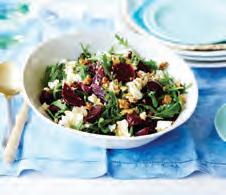
• 200g mixed salad leaves
• 250g baby beetroot, cut in half
• 150g reduced-fat feta cheese
• 3 tbsp (60ml) caramelised balsamic vinegar. Method:
1. Mix the salad, beetroot and crumbled feta together in a bowl.
2. Drizzle with the caramelised balsamic vinegar. Optional: Sprinkle with 50g chopped walnuts (87 calories and 0.4 carbs/serve) for extra crunch. If you have them, walnuts add a lovely texture to this salad and complement the smoothness of the feta. In addition, they are significantly higher in omega-3 fat than any other nut. That’s the healthy fat that is also found in flaxseeds and fish oil.
This recipe is from 4 Ingredients More Diabetes: 4ing redients.com.au/products/4-ingredients-morediabetes. The book is on sale for $24, including free postage Australia wide.
CELEBRATE the Andrews Sisters as three dynamic, harmonious divas perform with The Miller Horns band and ignite the stage with Christmas songs straight out of the 1940s.
The original Andrews Sisters trio brought joy to so many during the troubled times of World War II. Together with Bing Crosby, they recorded many classic Christmas tunes, reminding the Allied Forces’ troops of home.
Songs included Santa Claus Is Comin’ to Town, their beloved version of Jingle Bells, Mele Kalikimaka and White Christmas
Part of the Daytime Concert Series, the show will also delight audiences with
THE yuletide joy will be here early when Chr istmas Actually comes to town.
Relive the magic musical moments from beloved holiday classic Love Actually, including songs by Mariah Carey, Joni Mitchell, Norah Jones, Eva Cassidy, Kelly Clarkson, The Beach Boys and The Beatles, brought to life by a rockstar band of Australia’s top musicians and vocalists.
Sing along with an all-star cast led by Australian cabaret icon Libby O’Donovan to all the hits from your favourite festive film, wrapped up with a sprig of holly and

a selection of modern tunes done in the style of the original Andrews Sisters. WHERE: The Events Centre, 20 Minchinton Street, Caloundra.
WHEN: Wednesday, December 11, at 11am.
TICKETS: from $25. Call 5491 4240 or visit theeventscentre.com.au
bucketloads of comedy and charm. Bursting with nativity lobsters, cinnamon sticks and endless fun, Christmas Actually is the ultimate silly-season starter.
WHERE: The Events Centre, 20 Minchinton Street, Caloundra.

WHEN: Thursday, December 19, at 7.30pm.
TICKETS: from $55. Call 5491 4240 or visit theeventscentre.com.au











Join the festivities at The Events Centre!

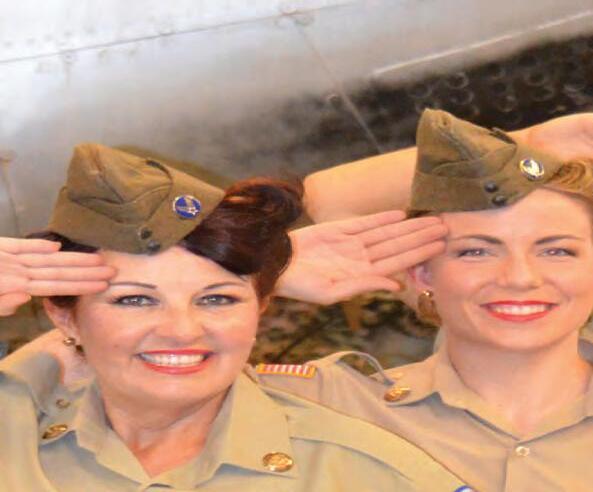



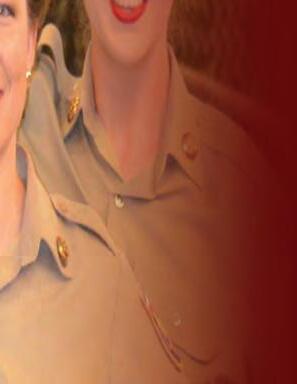






A jolly tribute to the Andrews Sisters trio and the many classic Christmas tunes they recorded with Bing Crosby, such as Santa Claus Is Comin’ to Town, their iconic version of Jingle Bells, Mele Kalikimaka and White Christmas. Whether it’s a trip down memory lane or something more recent, this daytime show is for everyone to enjoy.
Wed 11 Dec, 11am











The Music of Love Actually Live On Stage!
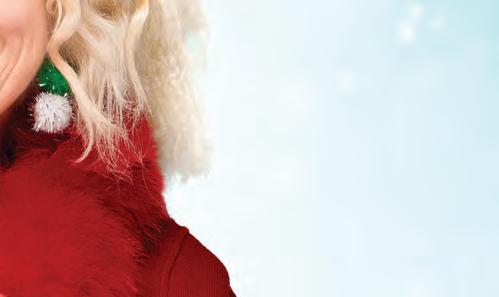






Relive the magic musical moments from your Mariah Carey, Joni Mitchell, Norah Jones, Eva Cassidy, Kelly Clarkson, The Beach Boys and The Beatles, brought to life by a rockstar band Thu 19 Dec, 7.30pm


“ … This is a shhow thaat w will bring g a lot of joy in i to t people’ e s lives.” – Timme Ouut

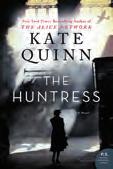
By Kate Quinn
Historical fiction
Reviewed
by

Jan Kent
FROM the acclaimed historical fiction writer Kate Quinn, this gripping novel has two timeframes: within Soviet Russia’s World War II and post-war Europe and Boston.
The aftermath of the war is the basis for this tale, revealing a fascinating story of perpetrators, survivors and the search for justice for those lost to the evils of war.
The strong women characters, developed skilfully by the author, lie at the heart of this book’s attraction for me.
Nina is one of the Night Witches: a regiment of female aviators flying night missions to deter German bombing missions, and contrasts with Jordan, a seemingly gentle aspiring photographer who becomes suspicious of her mysterious stepmother. Who is she?
This unfolds as the reader is drawn into the intrigue and suspense of this historically well-researched and accurate novel. As the only survivor of the evils of ‘The Huntress’, Nina joins a retired war correspondent in searching for Nazi war criminals.
This powerful book shines a light on an aspect of feminist history with which I was unfamiliar, but has given me a heightened awareness of the strength of the female spirit.




By Bryce Courtenay Thriller
Reviewed by John Kleinschmidt
THIS novel is very different from other books written by Bryce Courtenay and I have read almost all of them.
In a departure from his prolific Australian historical fiction stories, almost all of the action occurs in Singapore. I really enjoyed the characters in this tale of the Singaporean business world, (centred on a multinational advertising agency), the reform of Singapore, Chinese-Australian history and the influence of Chinese culture on success.
Our characters, Simon – an unattractive Australian-born Chinese, his hard-won lover Mercy B Lord, bosses The Wing Brothers and his alcoholic American work associate Dansford Drocker, each have a lead role in different sub-plots. This results in an unexpected and very surprising ending that I certainly didn’t see coming. Recommended.
By Stef Penney, Murder Mystery
Reviewed by Annie Grossman, of Annie’s Books on Peregian
FROM the author of the wonderful novel The Tenderness of Wolves comes a murder mystery set in a small, close-knit village in Nordland: a remote part of Norway inside the Arctic Circle.
It’s the time of end-of-school celebrations know as ‘the russ’, and the parties are in full swing. The Arctic winter has almost passed, but as the village of Fauske gets ready for brighter days, a boy goes missing in the wilderness.
Conflicting stories make any solution very
difficult as villagers, old and young, muddy the waters while protecting their own secrets.
The novel has a terrific sense of place, and is wild and inhospitable, yet magnificently beautiful.
The residents are equally interesting – all with their own, sometimes closely guarded histories and secrets.
This is a strong piece of writing, full of atmosphere and tension.





By Allan Mason, Self-help book
KERRY Packer’s former accountant Allan Mason has released this year’s edition of his cult classic, Tax Secrets of the Rich 2024-25
In it, he debunks the myth that Australians will be better off after the Budget 2025 announcement of tax cuts.
Mason says there are two main reasons for this: firstly, the tax cuts do not counteract the inflationary effects of rising prices in daily essentials such as food or rental accommodation.
“We all know that as your income increases, so does your tax burden. It pushes you up into new tax brackets which means you pay more, even though from a purchasing point of view your money buys less. The tax office takes its share based on your gross income not real or inflation adjusted income,” he says.
He adds that there is an interaction between inflation, wages growth and tax increases through bracket creep, as the wages go up. The net result is

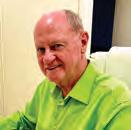
always to the taxpayers’ disadvantage, especially in the past three years.
“From 2022 to projections for 2025, wage growth will be 14.4 per cent (average 3.6 per cent p.a.).



However, inflation over the same period is projected to be 19.2 per cent in total. So, the average worker in cost-of-living terms is 4.8 per cent worse off,” Mason says.
“The tax cuts do not address this.”
His book outlines how to play the tax game using structures to take advantage of different tax rates and includes 11 tax tips covering nearly every type of entity and tax situation a person can encounter.
Mason has more than 40 years of tax and accounting knowledge that has assisted his many thousands of corporate and private clients over the years, including some of Australia’s wealthiest individuals.
By Darrel Roche
I’M A Peregian Springs first-time author who has just published my first book at age 75.
I started writing it back in 1982 when I was a lighthouse keeper.
This is my true story of making wise decisions and some howlers, experiencing danger, making startling discoveries, and encountering memorable characters while absorbing the beauty of the mighty and majestic Australian Outback.
Have you ever yearned for freedom and adventure? Me and my two mates certainly did. And we experienced plenty of it during a 14-month odyssey through Outback Australia in 1970 and 1971 in my trusty Landcruiser.
Escaping suburban boredom and 9-to-5 monotony, where our only travel involved back-and-forth trips to work, my two companions and I cut the umbilical cord to our jobs, families and security to embark on a journey of 24-hour, seven-days-a-week freedom. This was in the era before computers and mobile phones dominated our lives.
Come and join me on that adventure. Just leave all your cares and worries behind, jump onboard, and we’ll face the unknown together.
The book is available in bookstores including Annie’s Books on Peregian, Bermingham Bookshop or as an eBook at Amazon.
– Darrel Roche



















1. The region known as Transylvania is part of which country?
2. What nationality is former tennis player Kim Clijsters?
3. What is fossilised to form coprolites?
4. How many years make a millennium?
5. What is the name of the basket a fisherman carries to keep his fish in?
6. What was the name of The Beatles’ first album?
7. How many wheels does a dune buggy usually have?
8. Rank these from smallest to largest in area: Queensland, Western Australia, Alaska, Texas.
9. What was the main setting for the TV series called Das Boot?
10. What is the plural of the word ‘index’?
11. Which singer was born Anna Mae Bullock?
12. True nor false: there are no deserts in Europe?
13. What celestial object is Vesta?
14. Which British queen reigned for nine days?
15. Traditionally, what is sushi wrapped in?






16. Which Asian country hosted its first Formula 1 race in 2011?




17. Coined in 1988, what is Nike’s tagline?
18. Widely used in the late 20th century, what did VHS stand for?
19. What lake is overlooked by Australia’s High Court?



















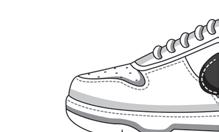

Burley Griffin. 20. Formic.










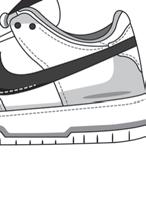

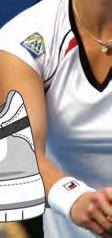

rt? mic? st It’ 18 em.tsSy 19 yelurB iffrG

20. What acid comes from ants: antacid, lactic or formic? 1. Romania. 2. Belgium. 3. Faeces. 4. 1000. 5. Creel. 6. Please Please Me. 7. Four. 8. Texas, Alaska, Queensland, Western Australia. 9. Submarine. 10. Indices. 11. Tina Turner. 12. False. 13. Asteroid. 14. Lady Jane Grey. 15. Seaweed.
duel, duet, dugite, dune, dung, dunite, dunlin, eluding, eluting, enduing, ennui, etui, genu, glue, glued, glut, glutei, gluten, guide, guild, guile, guilt, gulden, gunned, gunnel, indue, indulge, INDULGENT, indult, lieu, luge, lune, lung, lunge, lunged, lungi, lute, luted, luting, nude, nudge, tune, tuned, tuning, tunned, tunnel, ugli, undine, ungelt, ungilt, unit, unite, united, unled, unlet, unlined, unlit, untie, untied, until, untiled, untinged
degut, detuning, diluent, dilute,









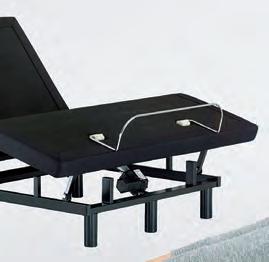











Japanese verse form(5)
Surgery chamber(7)
Japanese warrior(7)
Gracefully(9)
Discharge(5)
Tonguein-cheek(9)
Political policy(5,4)
Evenly(9)
17 Greek musician who visited the underworld(7)
18 Distribute (food)(5,2)
21 Flaxen cloth(5)
23 Mediterranean island(5)
24 Arab state(5)
Using the
colloquial
Complete the list by changing one letter at a time to create a new word at each step. One possible answer shown below.



